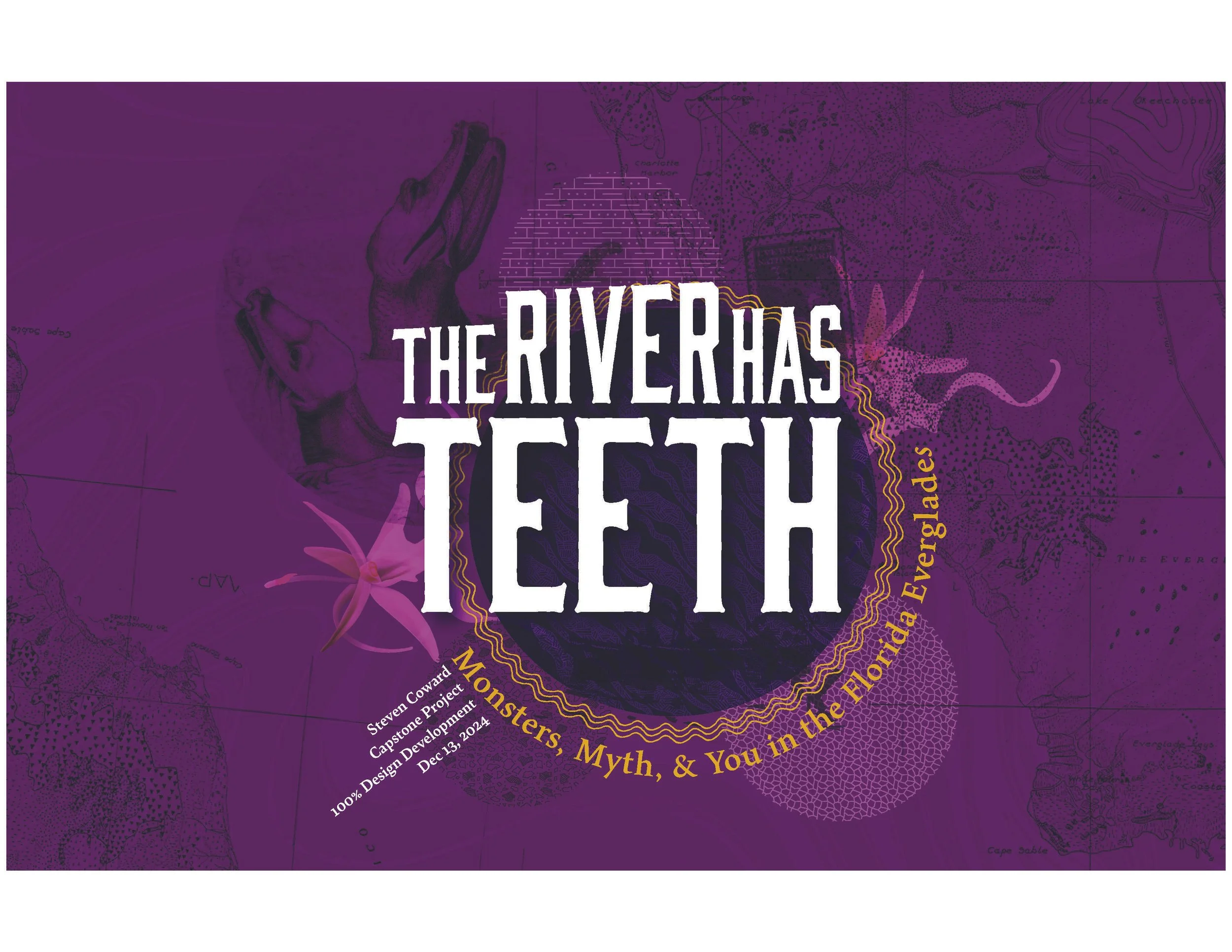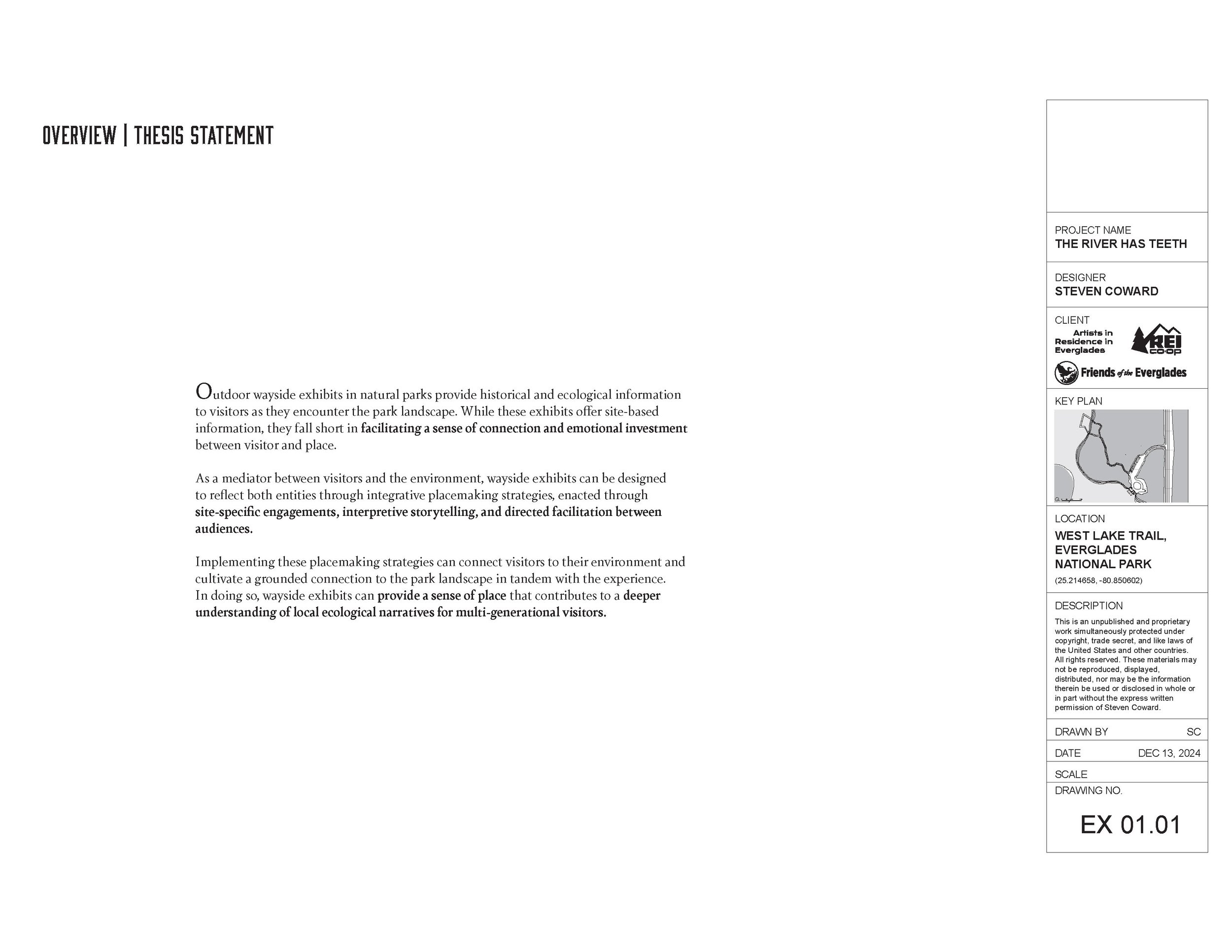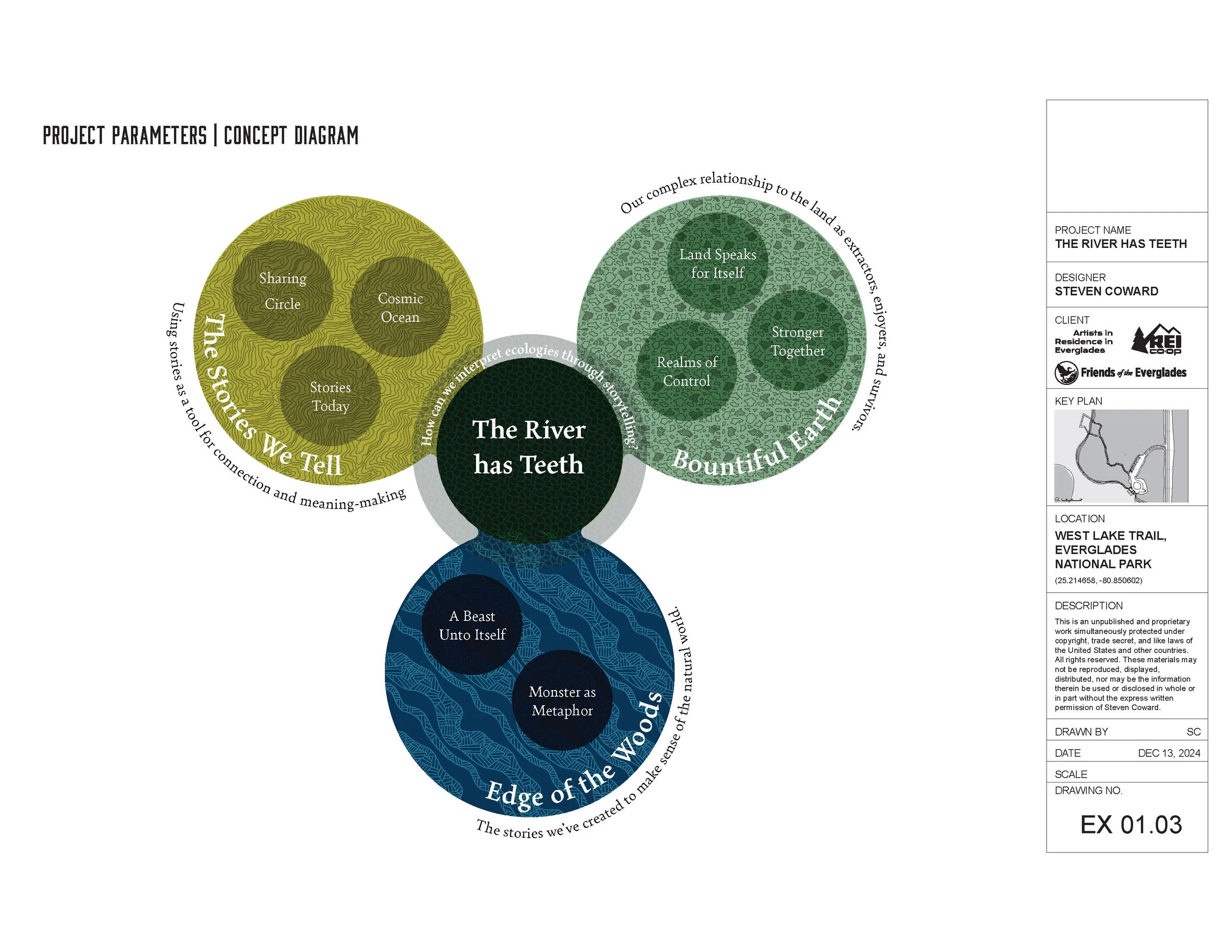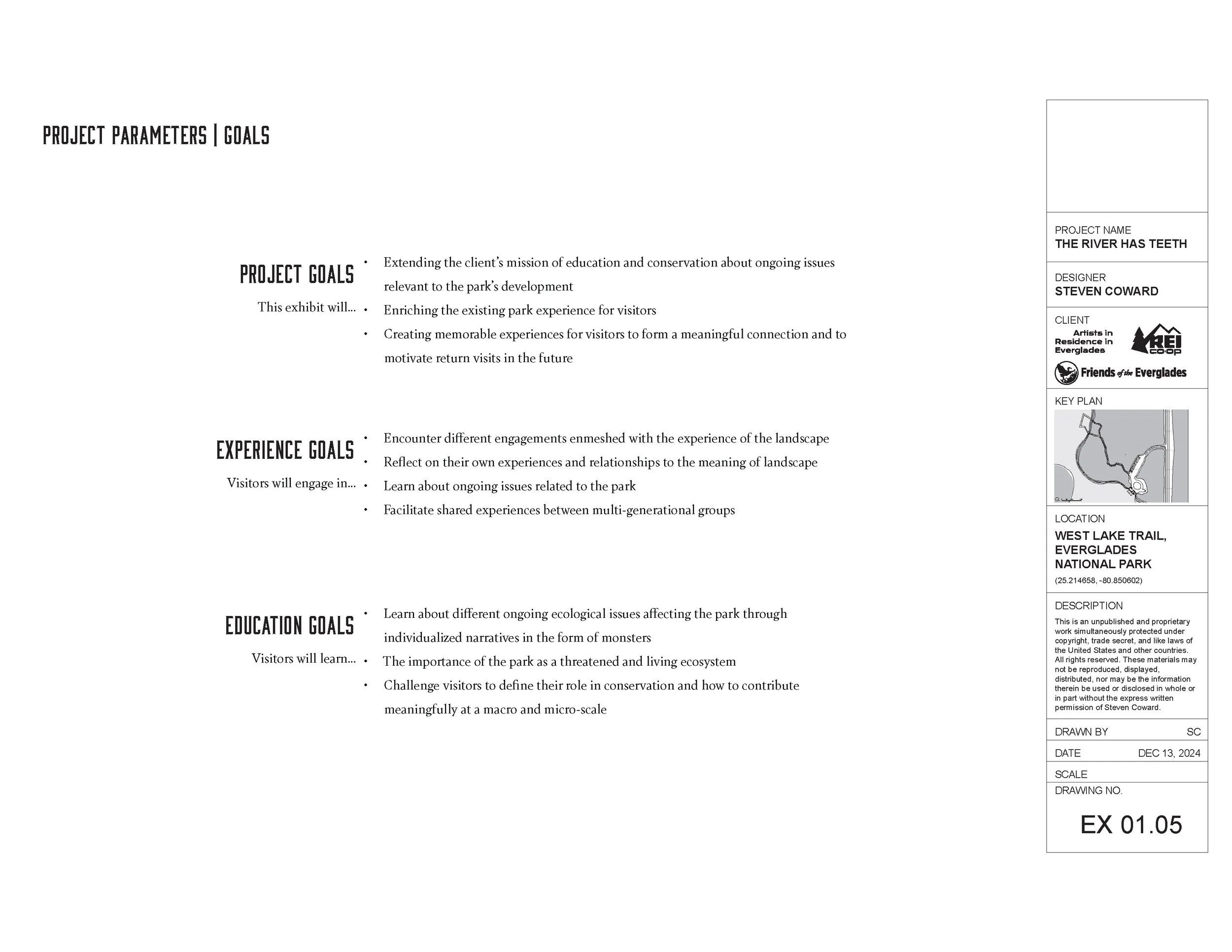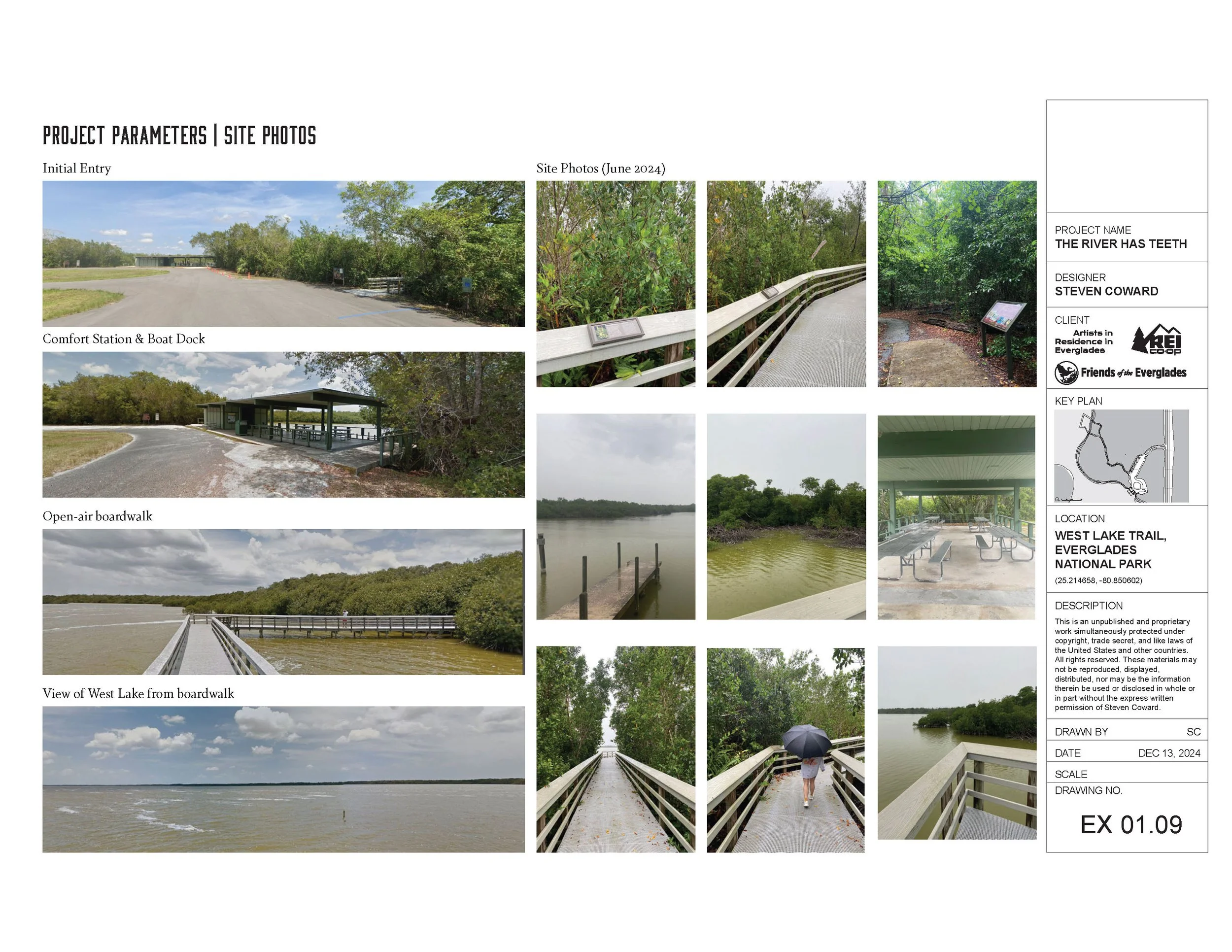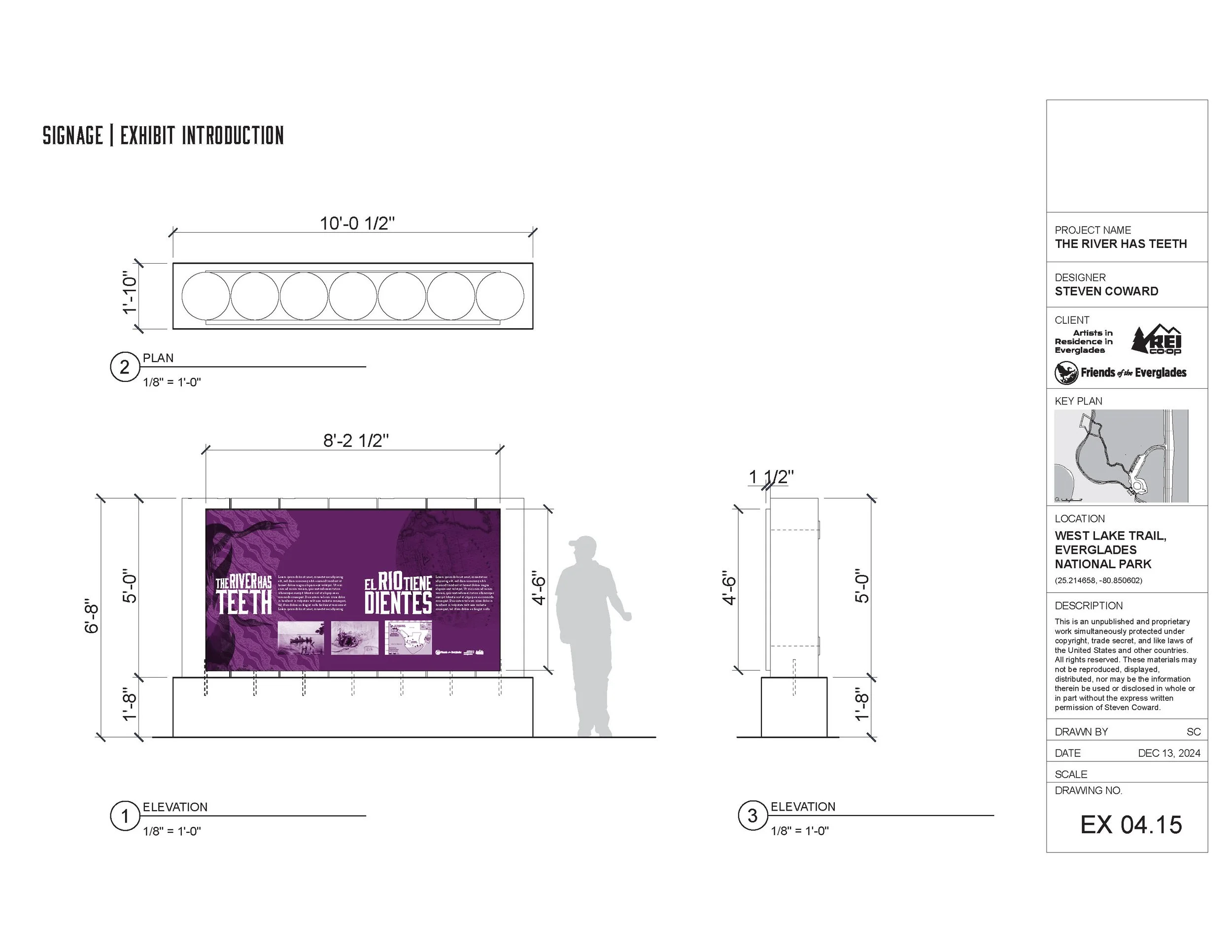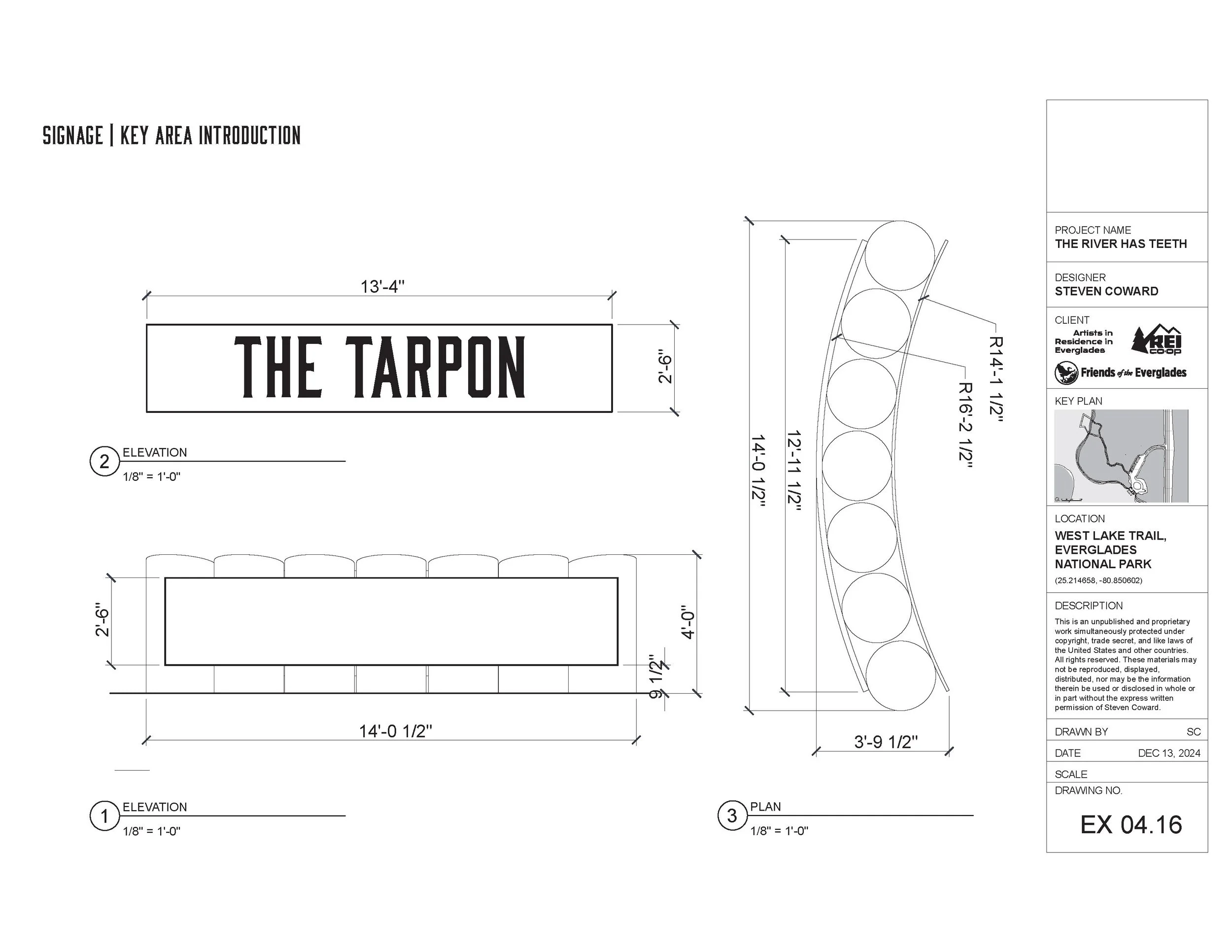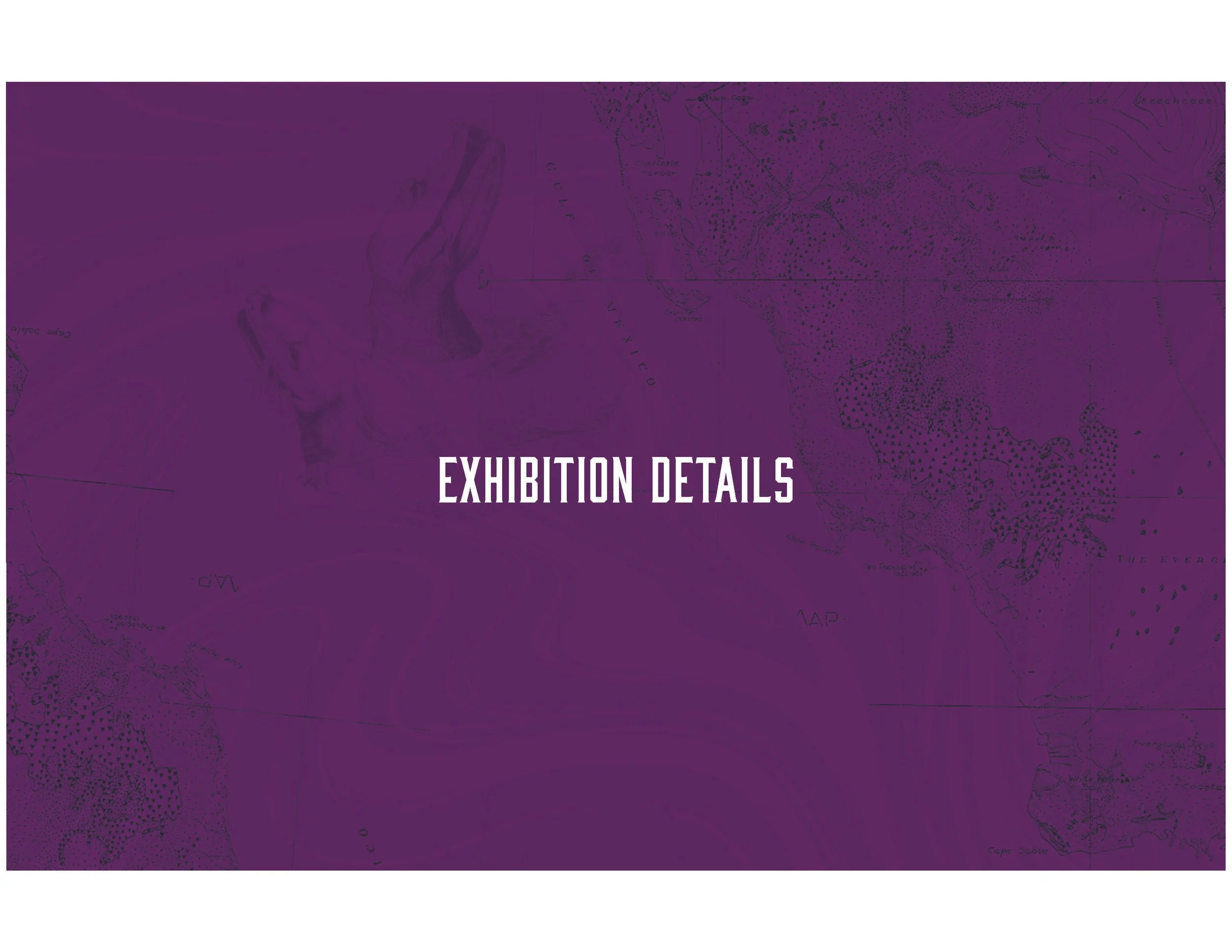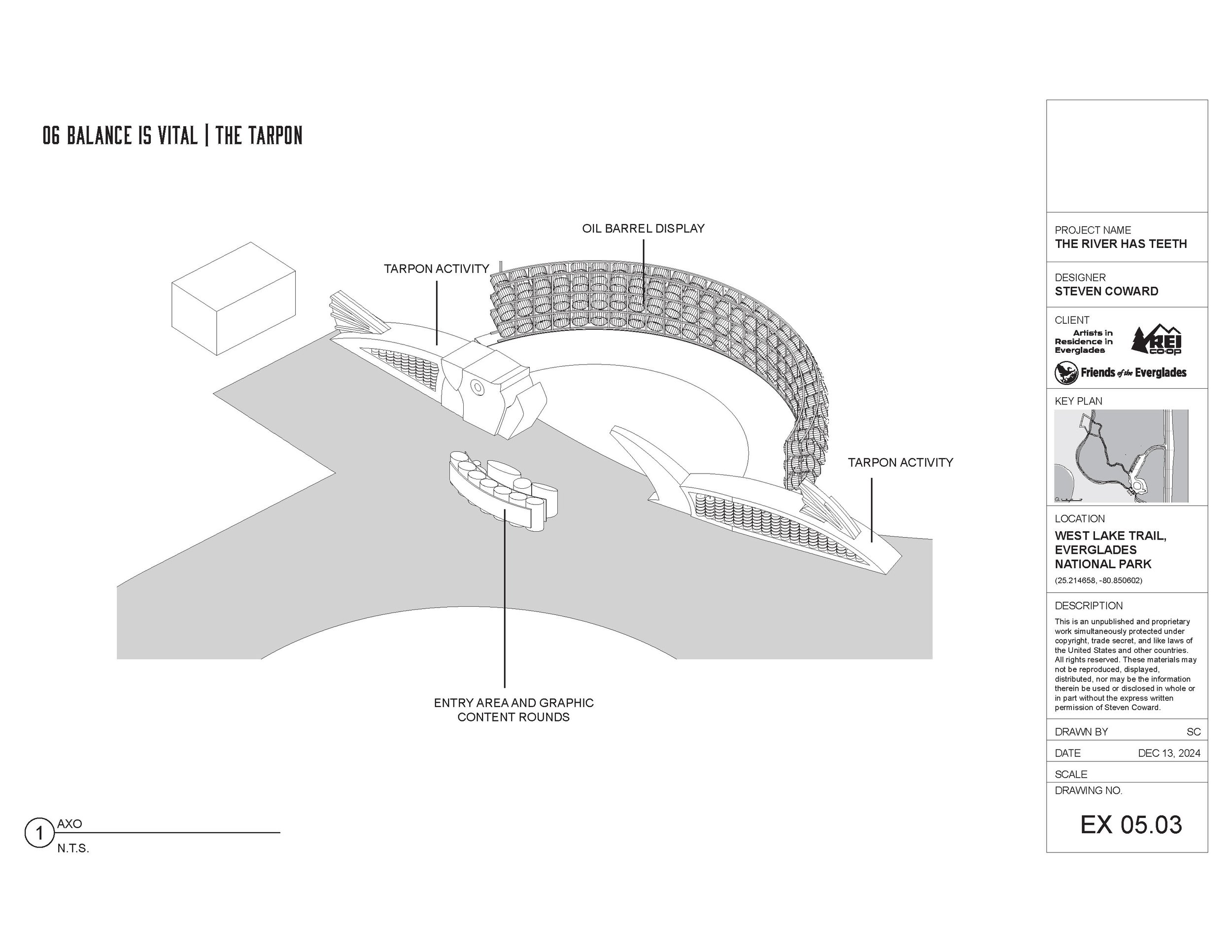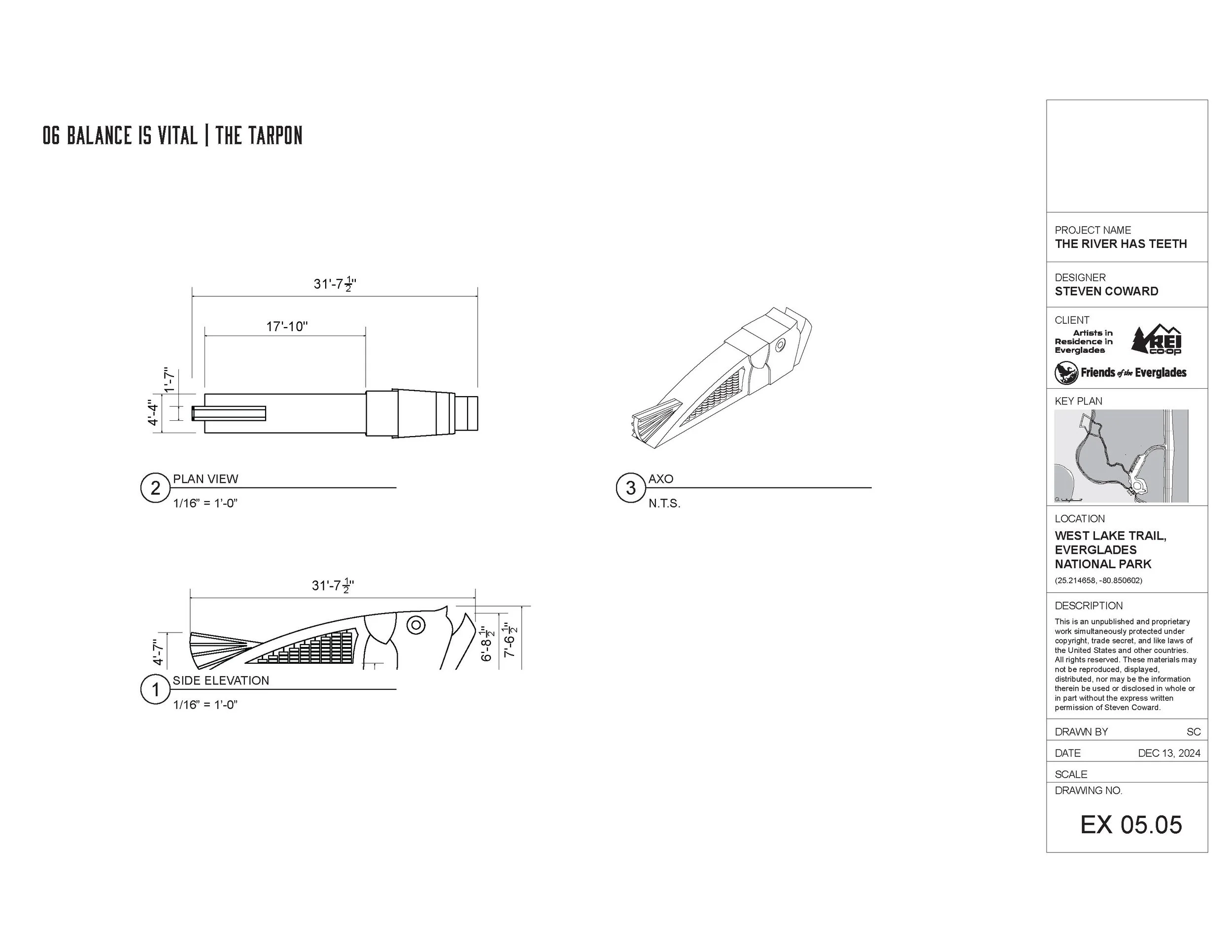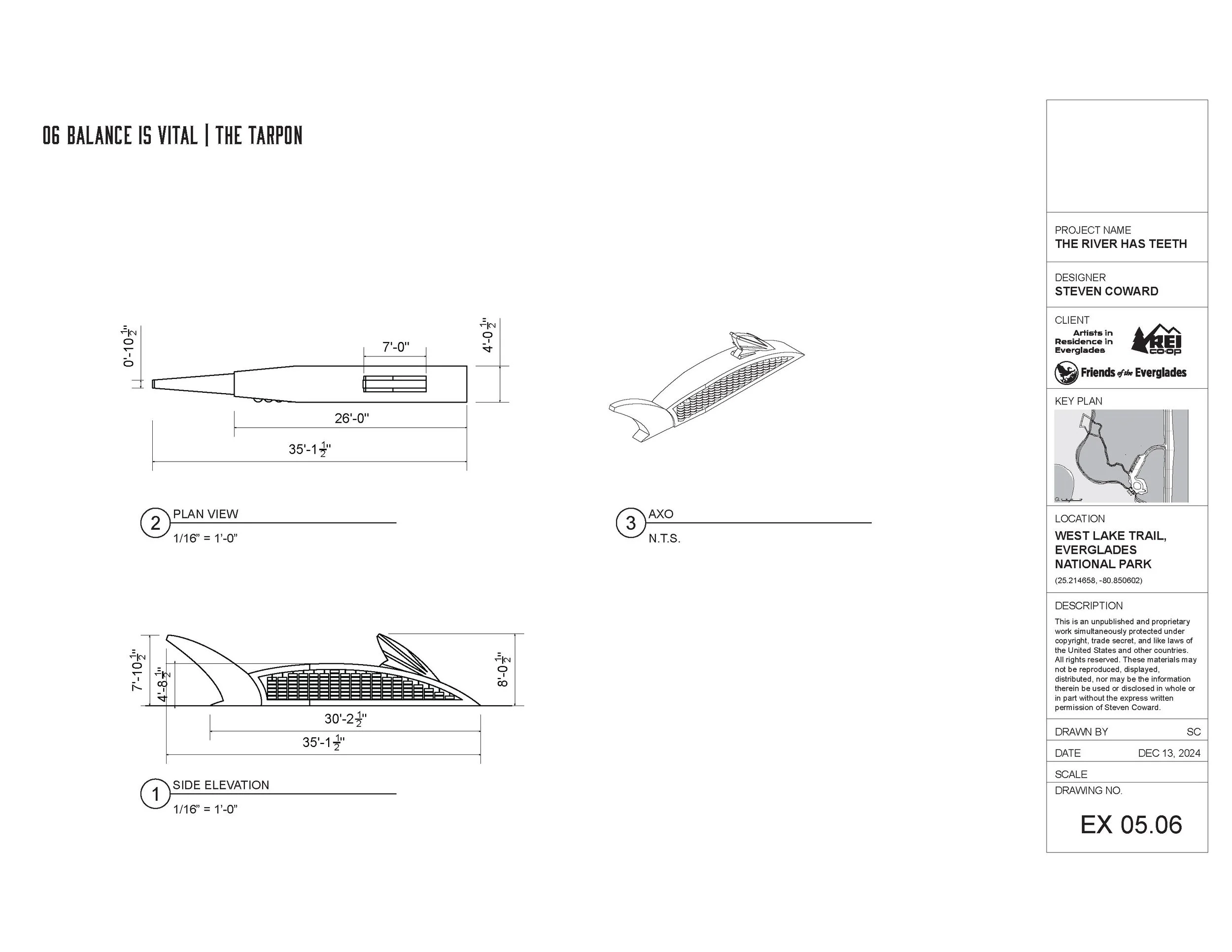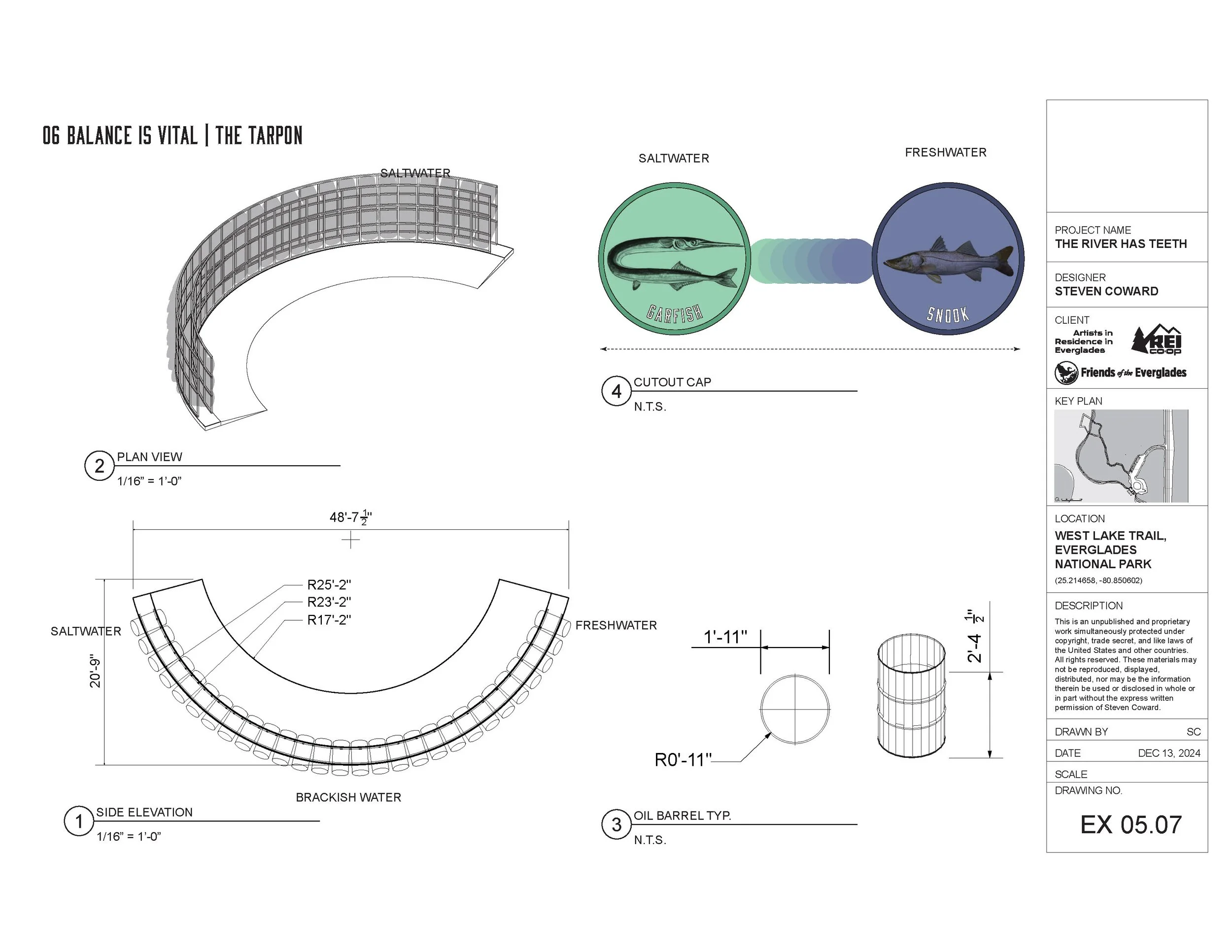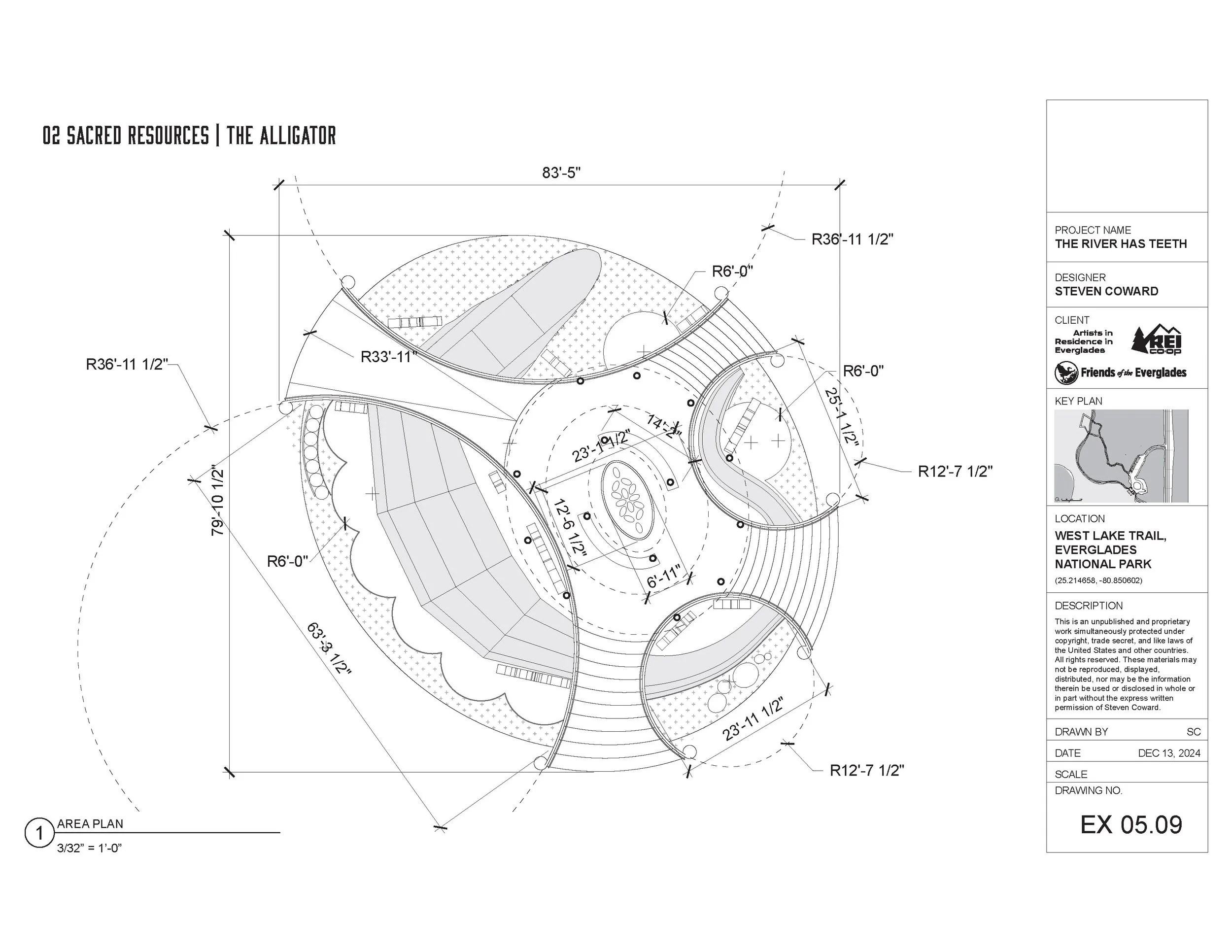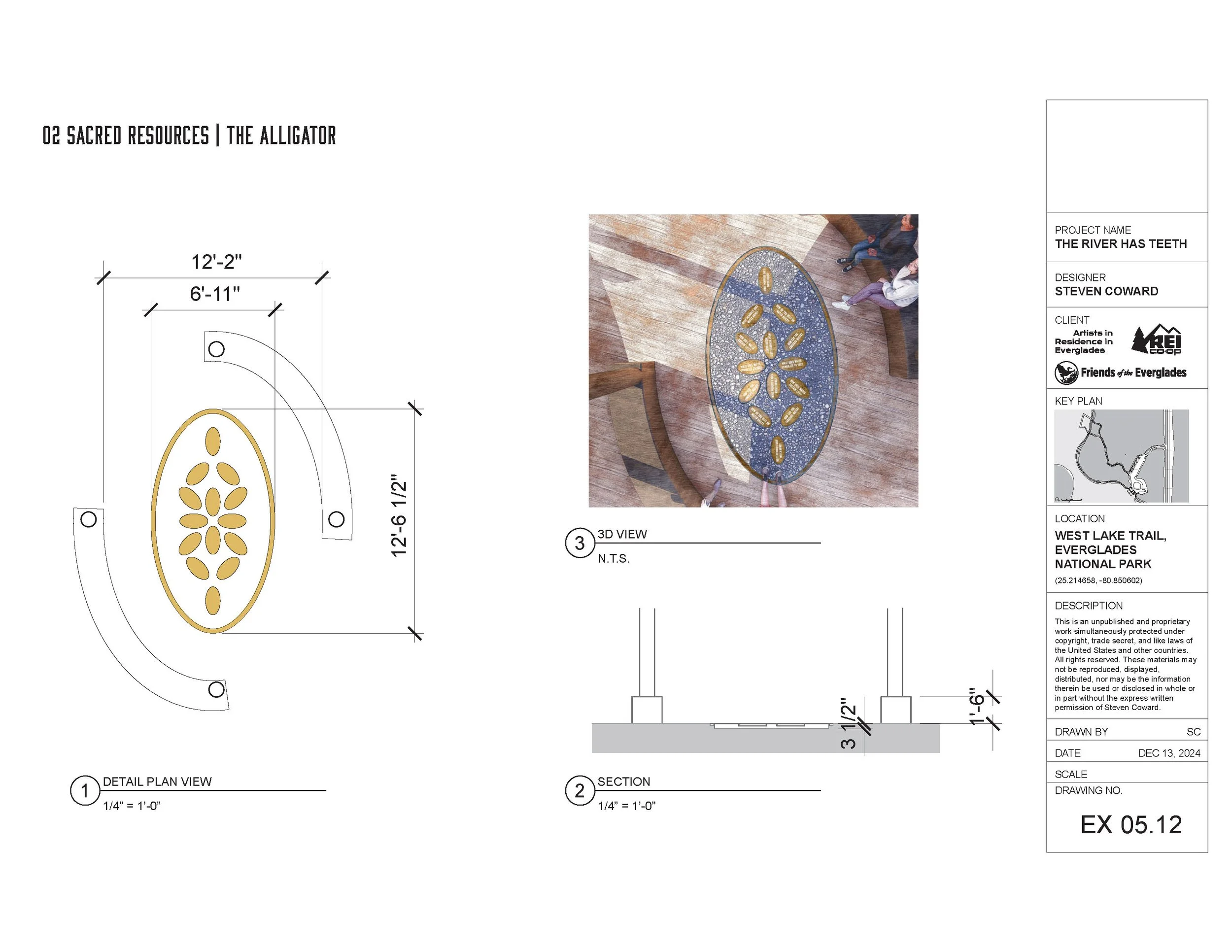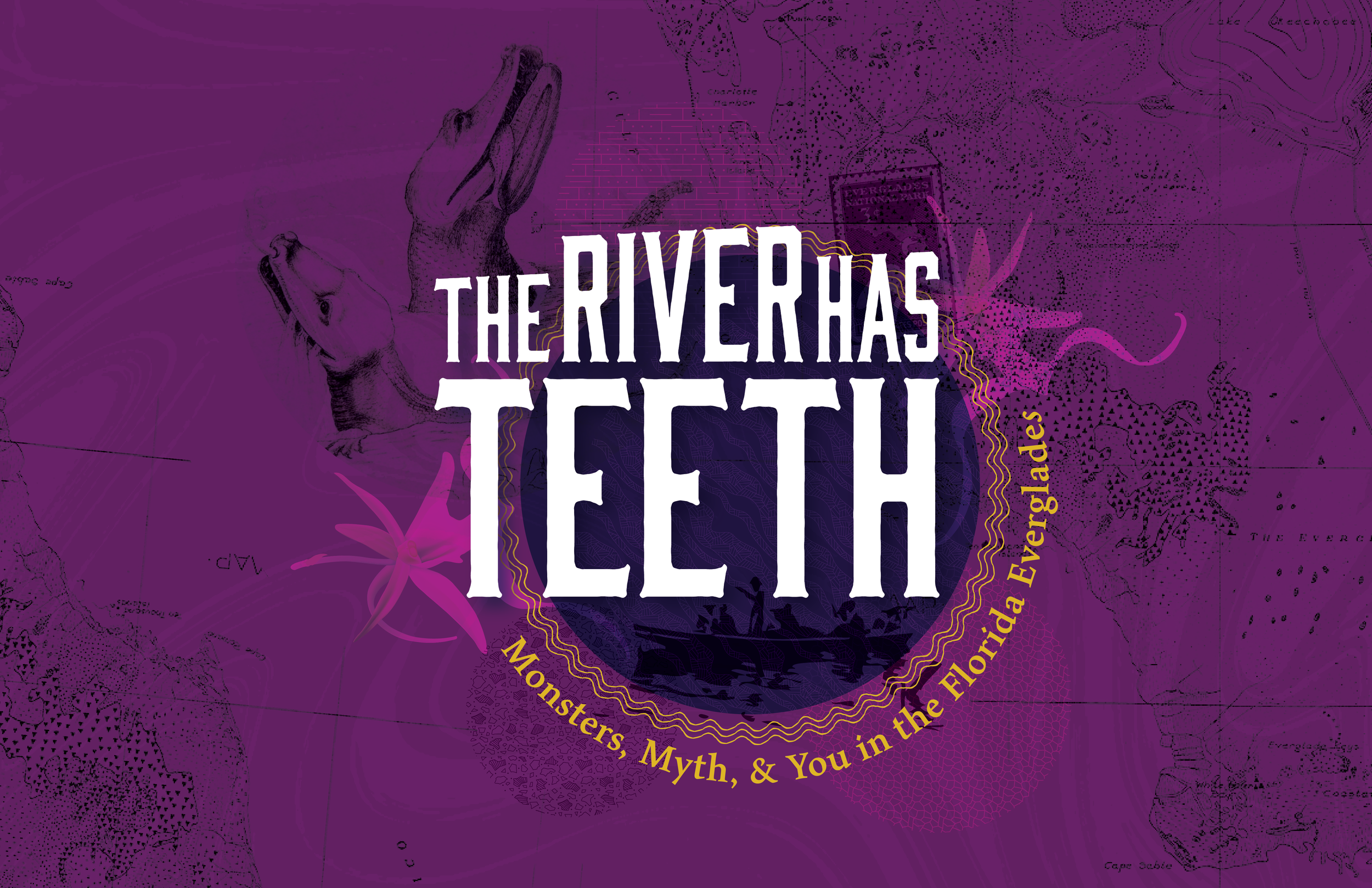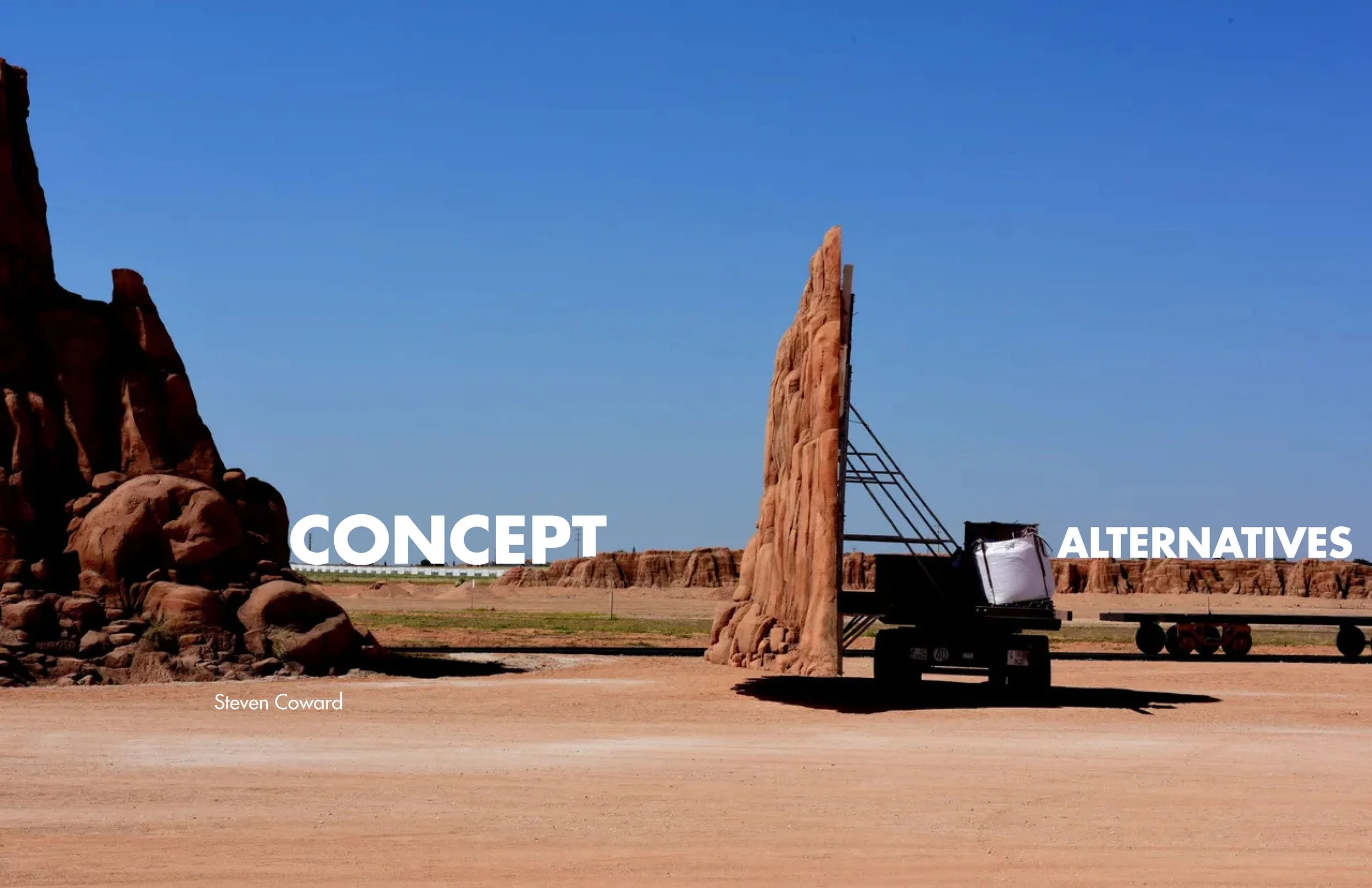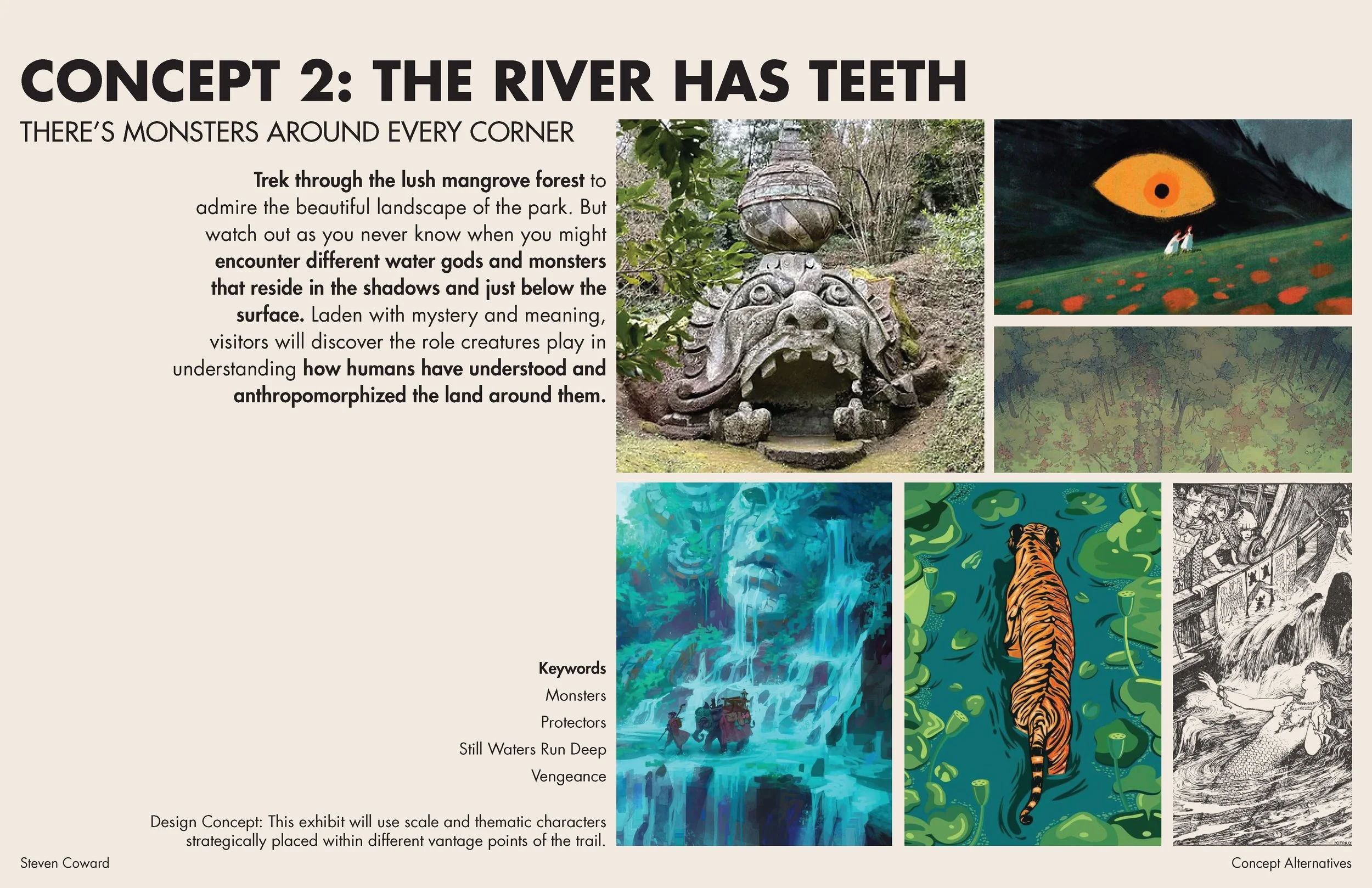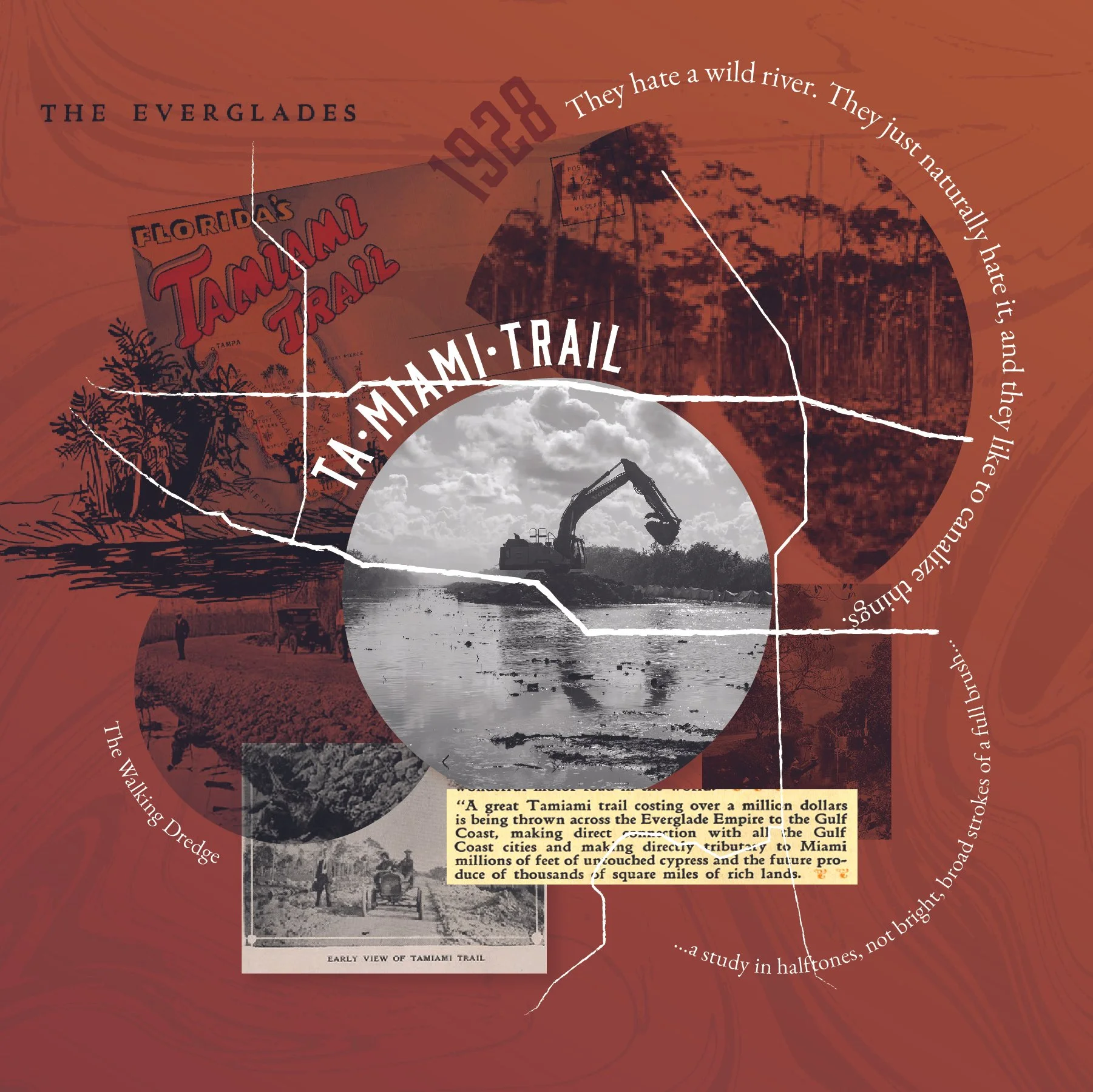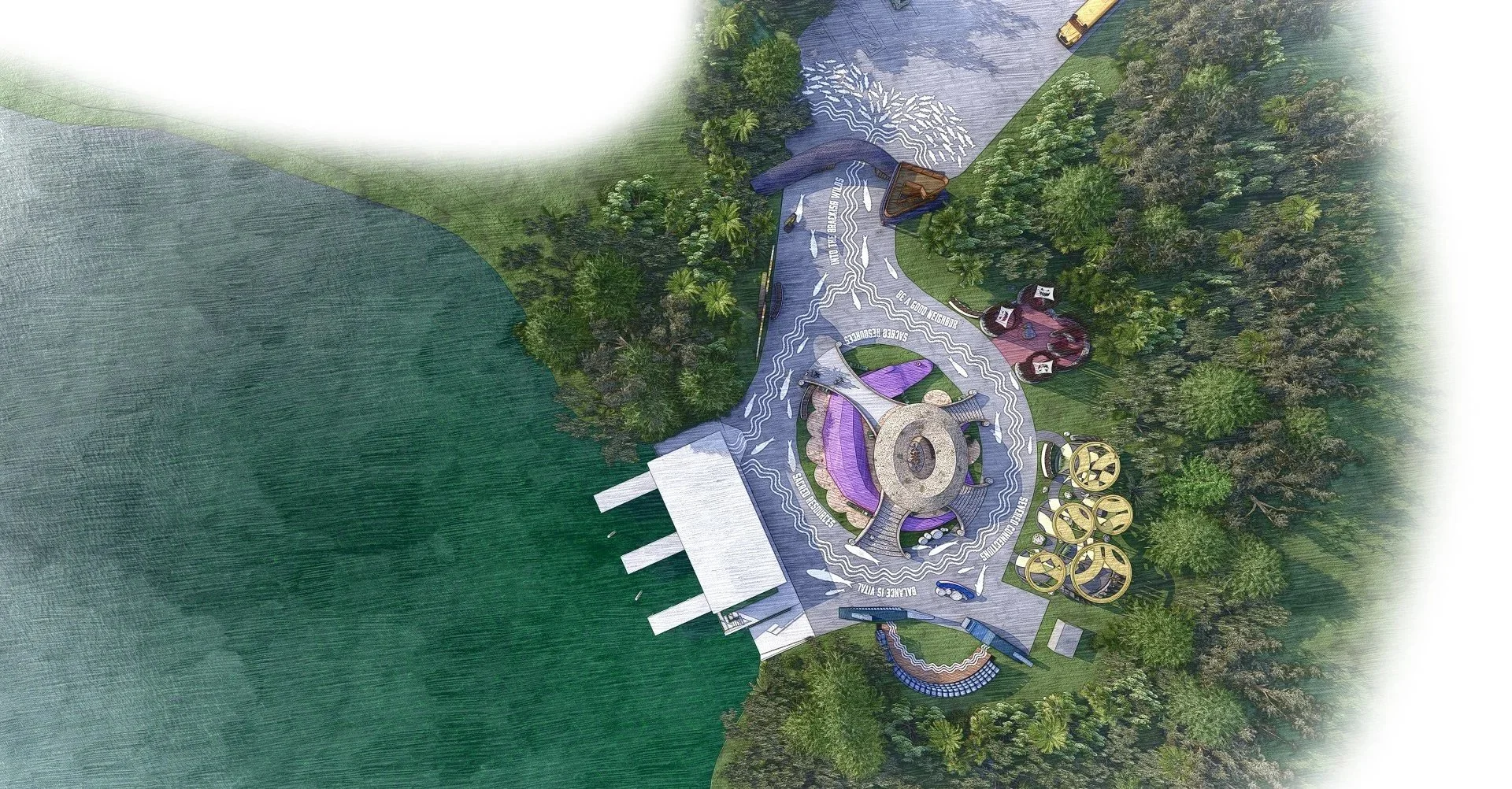
the river has teeth
Thesis Capstone, 2024
Fashion Institute of Technology M.A.
SEGD Academic Summit Speaker Selection 2025
Professors: Brenda Cowan, Christina Lyons, & Peter Hyde
Advisor: Sara DeAngelis
The exhibition project applies this research by proposing an outdoor exhibit in Everglades National Park that implements a series of synthesized narratives that interpret site-based content to park visitors. The project, titled The River has Teeth, is a low-impact outdoor exhibit overlaid onto the existing park site. The project invites visitors to learn about the park’s ongoing issues and historical context with opportunities to reflect on their own place within these landscapes to create emotionally resonant and empathic experiences. Consisting of an outdoor exhibit and an interpretive boardwalk trail, the exhibit offers guests a chance to form a sense of investment in the environment and pledge to care for it in the future.
This project highlights narrative and story-based design as exhibition development tools that can connect informational content to physical exhibit experience. The exhibition applies multiple ways in which design can include these activities to create resonant experiences that foster a sense of understanding for pressing ecological issues and messaging. Appealing to emotional, empathetic, and localized experiences provides visitors with the ability to create a sense of ownership and value in these places for visitors to enjoy for generations. This project’s use of narrative and storytelling to form emotional connections and understandings aids in conservation efforts by spreading awareness to visitors in a playful, digestible, and memorable way for visitors of all ages and learning types.
As part of my Graduate Thesis, The River has Teeth comprises of a thesis research portion and an applied project of said thesis. This project provides a design framework for expanding methodologies for existing wayside and outdoor exhibits in nature-based experiences (national parks, botanical gardens, zoos, etc.) to include storytelling and narrative-driven content as a tool for deeper understanding of ongoing ecological issues. As a continuation of work done by outdoor wayside and trailside exhibits, this paper foregoes the existing labeling system to present a component-based narrative that relates the site, place, and experience to visitors.
Focusing specifically on the outdoor national park system, research of prior work focused on narrative storytelling as a tool and as a means of engagement previously implemented in other outdoor exhibits, tree top walks, and land art pieces. Much of this research focused on ongoing conservation and ecological content present within messaging for these outdoor settings. This included interviews, various case studies, and prototype testing of several site-specific engagements. The goal for this project was to use narrative as a content and development tool for designers looking to tell ecologically rich stories within unfacilitated outdoor environments.
Early Concept Proposal
thesis statement
Outdoor wayside exhibits in natural parks provide historical and ecological information to visitors as they encounter the park landscape. While these exhibits offer site-based information, they fall short in facilitating a sense of connection and emotional investment between visitor and place.
As a mediator between visitors and the environment, wayside exhibits can be designed to reflect both entities through integrative placemaking strategies enacted through site-specific engagements, interpretive storytelling, and directed facilitation between audiences.
Implementing these placemaking strategies can connect visitors to their environment and cultivate a grounded connection to the parklandscape in tandem with the experience. In doing so, wayside exhibits can provide a sense of place that contributes to a deeper understanding of local ecological narratives for multi-generational visitors.


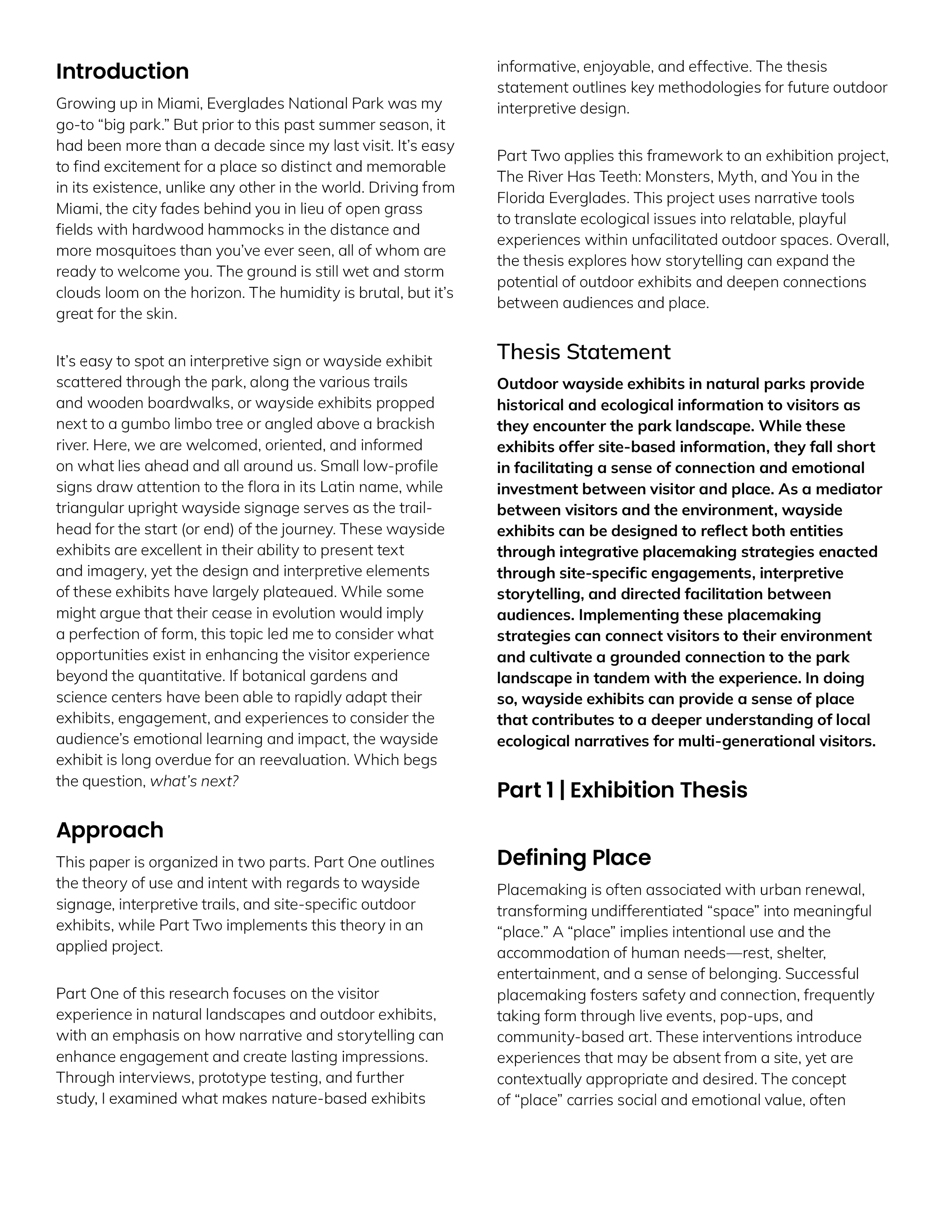
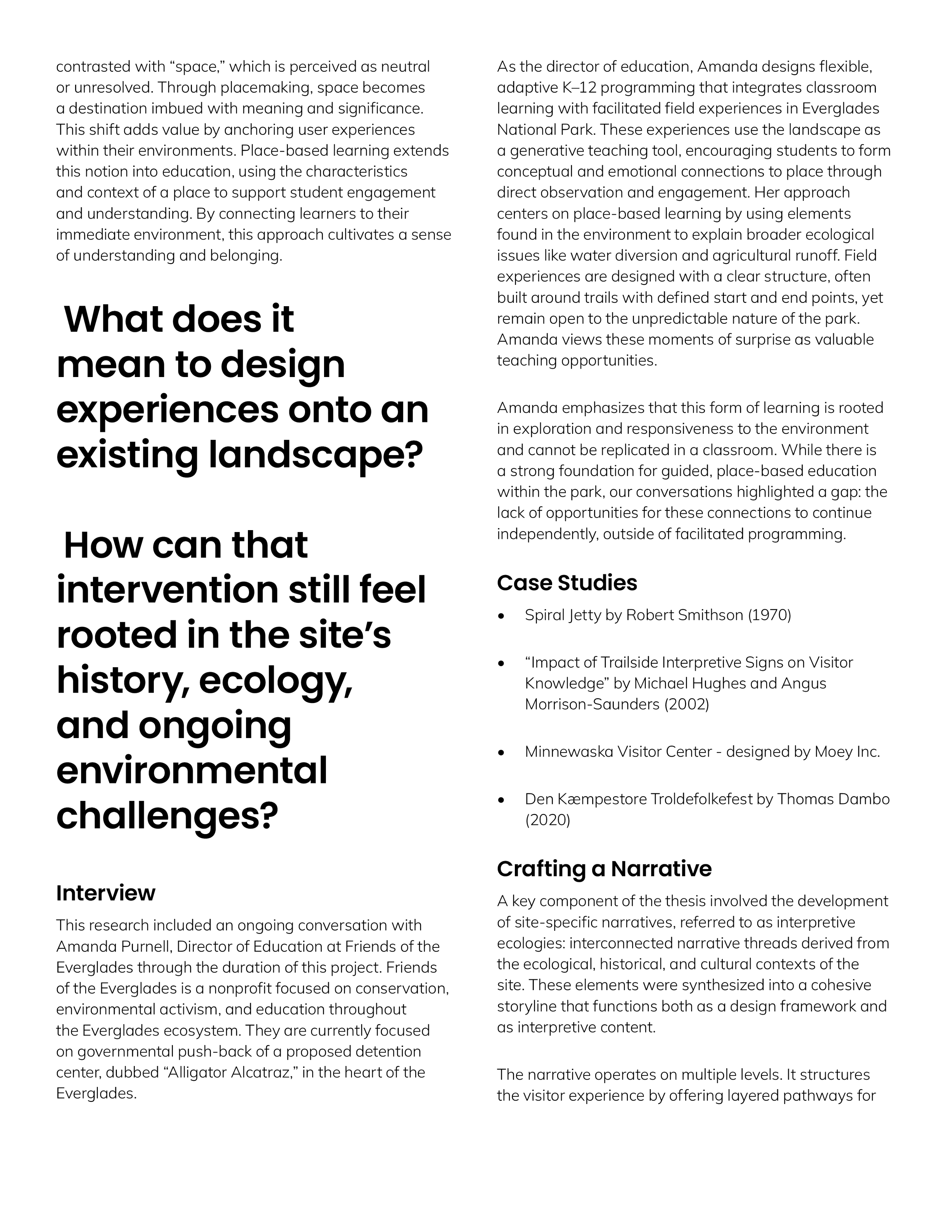
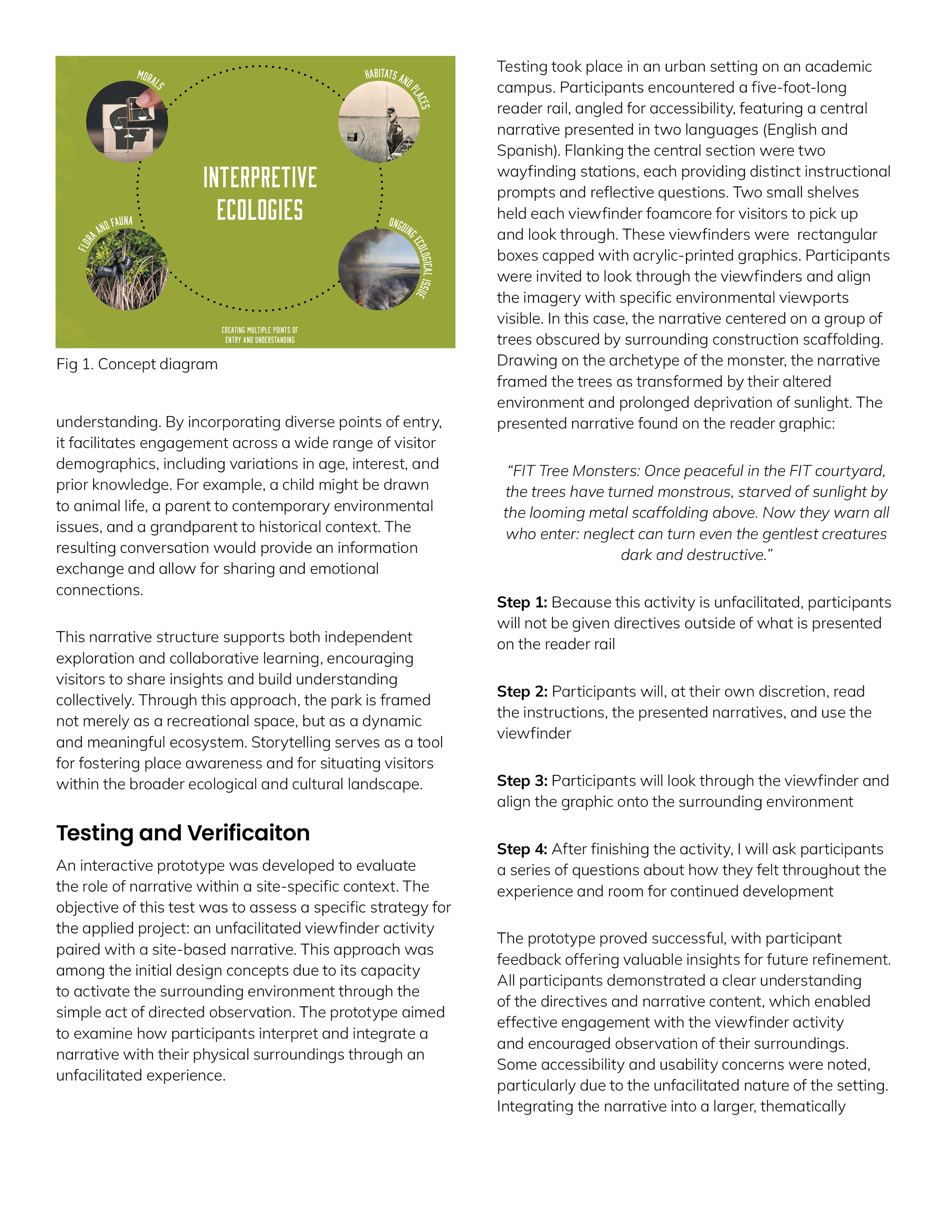



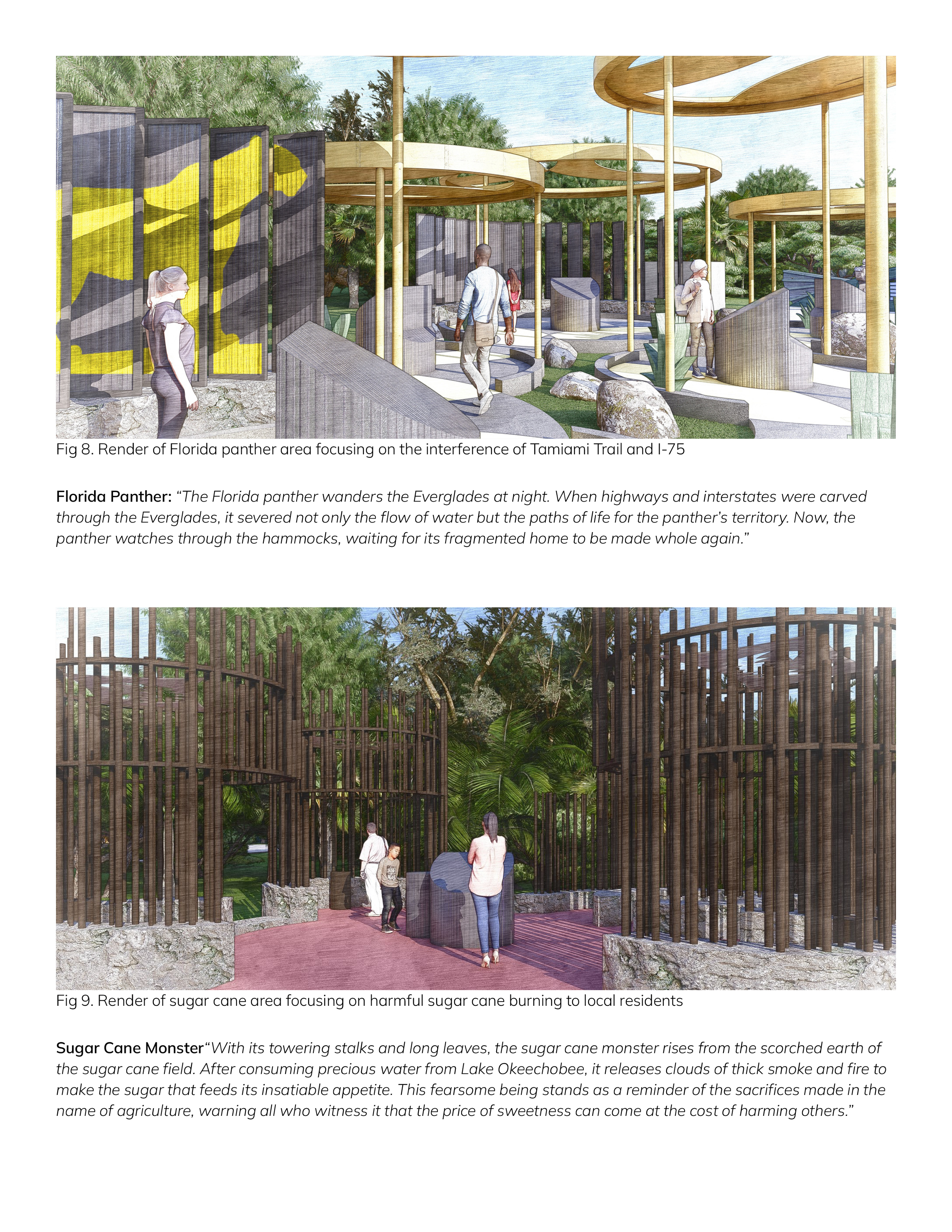
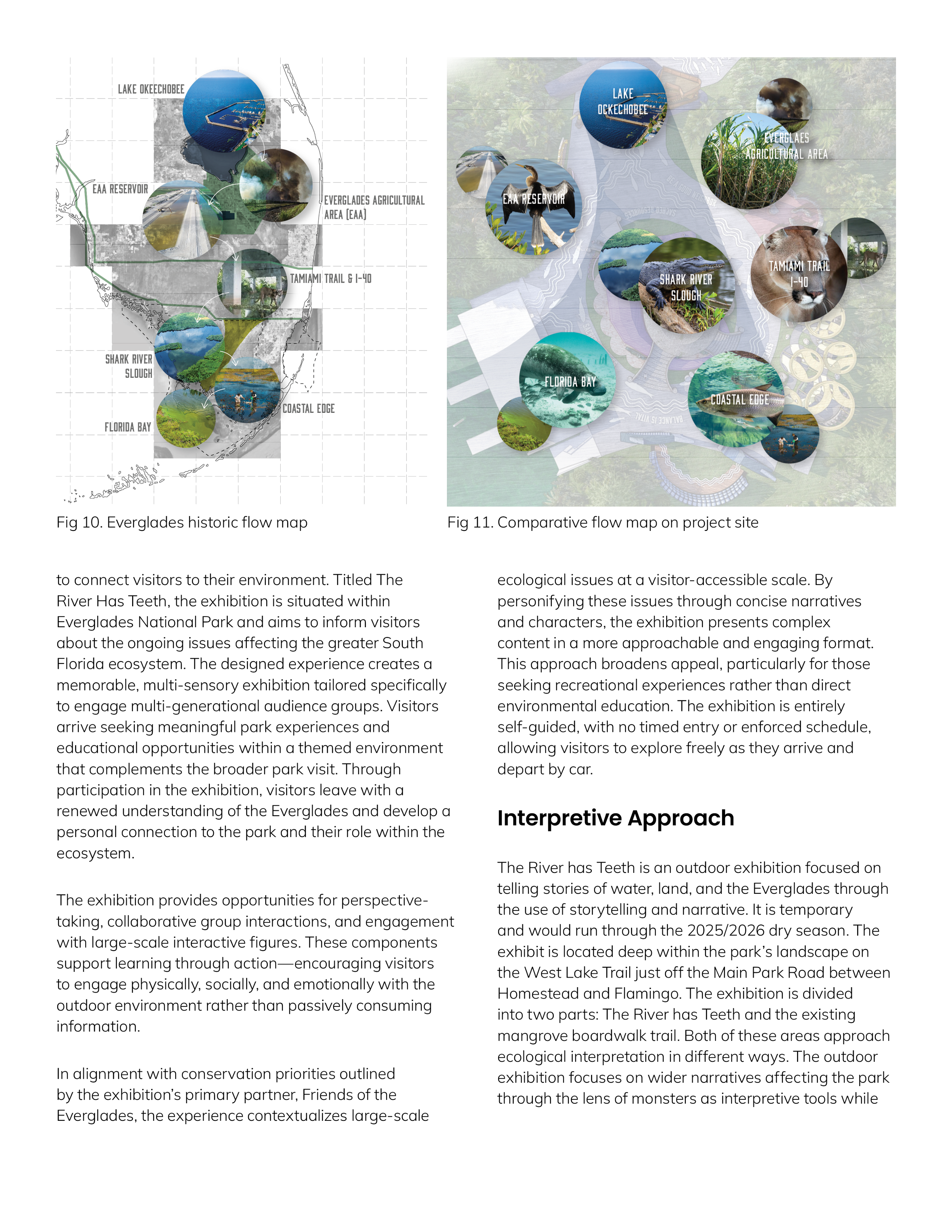

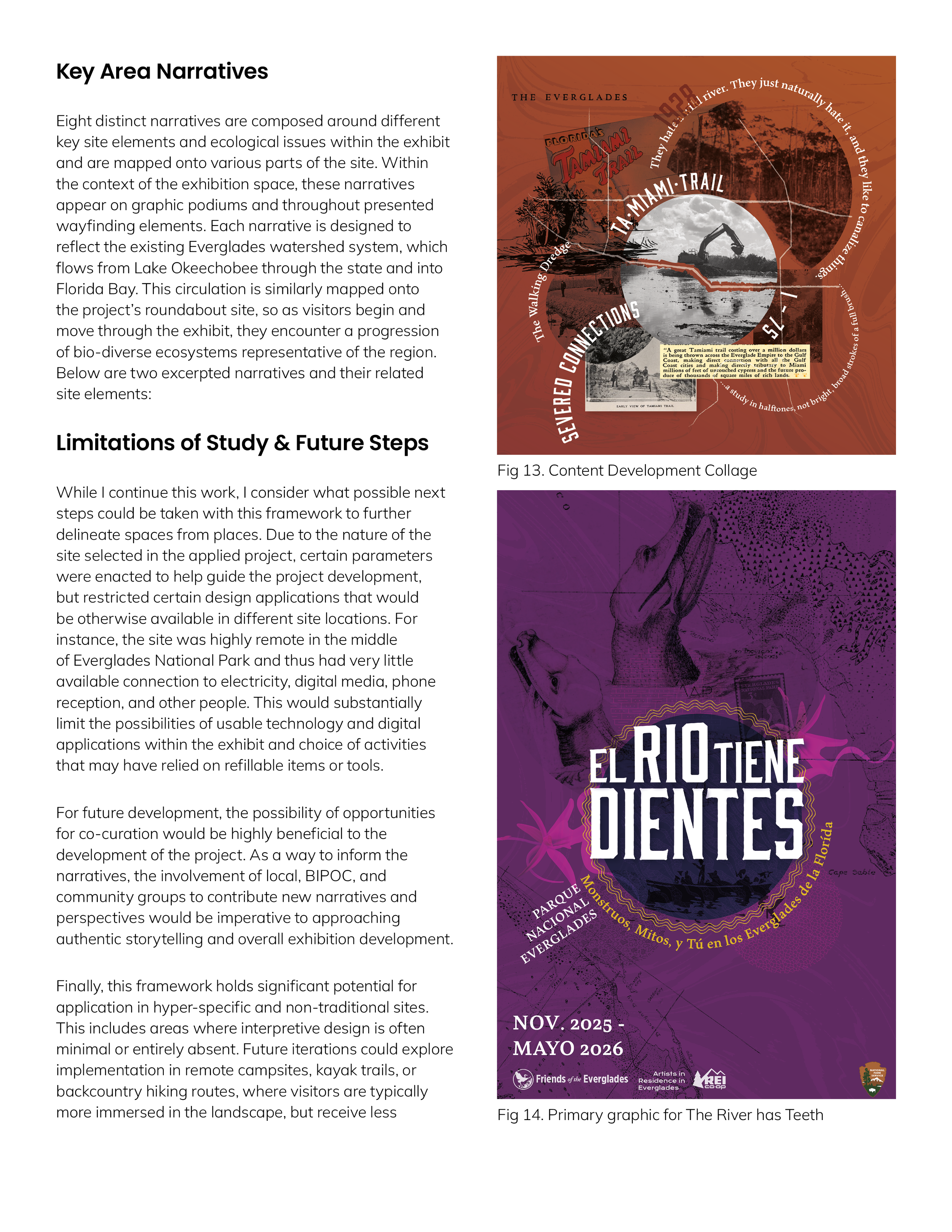
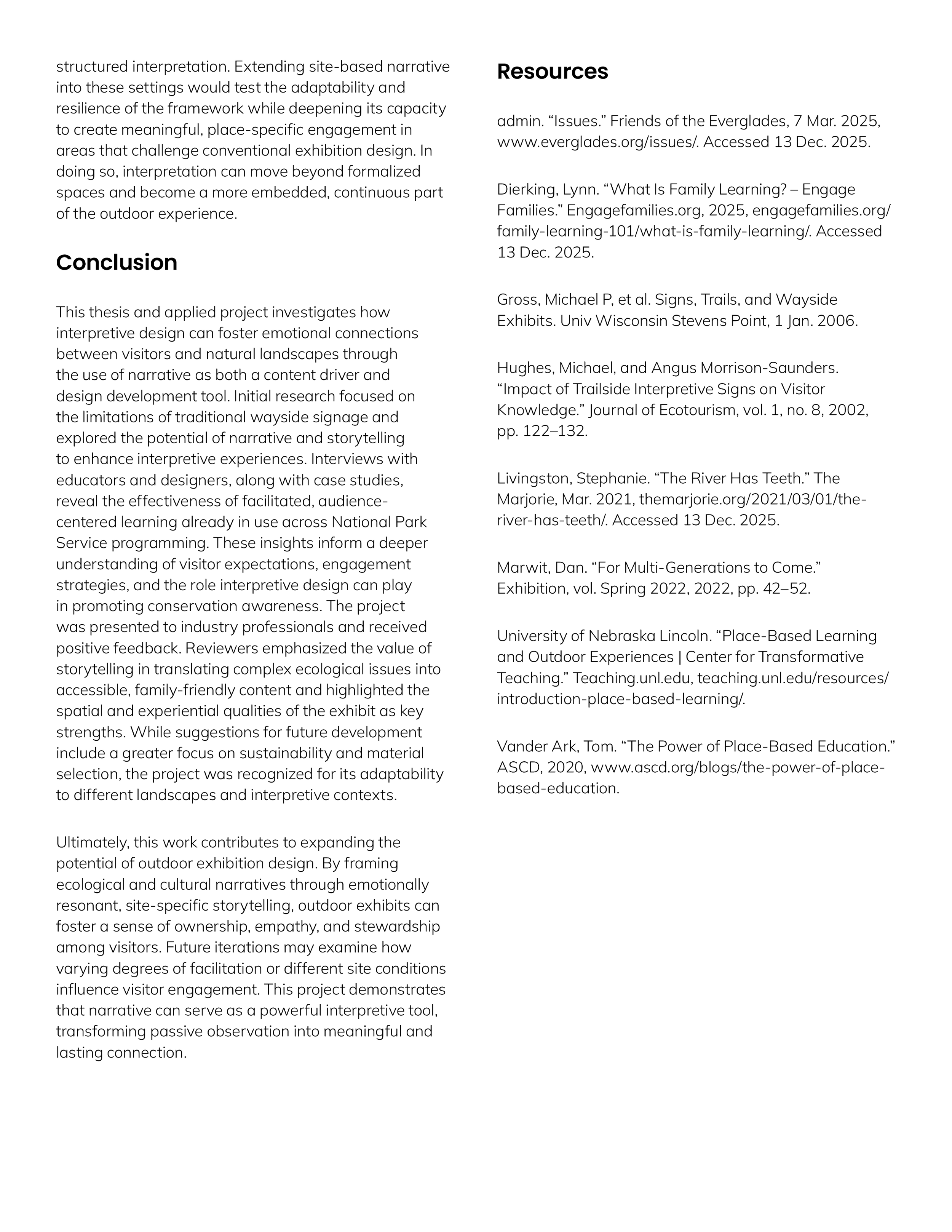
thesis implementation
Crafting Site Specific Narratives
This exhibition focuses on reaffirming people’s appreciation for nature and national parks. It does so by educating visitors in Everglades National Park by blending in the informational with the experiential. By curating four interpretive aspects (morals, flora and fauna, ecological issue, park habitat/place) into one key area, the exhibit creates multiple points of entry and understanding for visitors. This also broadens the connections that can be made within a multi-generational audience, as it can have cross generational appeal that adapts to different reading levels, ages, interests, etc. These four aspects fall under one cohesive narrative that serves to connect all of these topics into one key area. Each key area highlights the different factors, causes, and effects that these issues have and offer visitors a way to engage in social action outside the park.
By contextualizing Everglades National Park as different from the known picturesque landscape, visitors understand the park as a complex and highly developed space with a long history (and ongoing present) of human intervention and ecological change. Bringing these unseen narratives into the park landscape can draw immediate understandings relative to the visitor's surroundings.
story as interpreter
Storytelling can facilitate connection between visitors and allow them to synthesize information and understandings in a group setting. By allowing room for facilitated conversation and activity, visitors can make connections and continue conversations past the exhibit site.
story as facilitator
Integrating local perspectives acknowledges the people living in and around the park. As the Everglades, historically, included the entirety of South Florida, blurring the line between park grounds and urbanized spaces through the use of first-hand perspectives reminds visitors that connection to the Everglades does not stop at the park boundary.
story as witness
Visitors reassess their own day-to-day environmental practices and the motivations behind them. In an effort to fight against feelings of hopelessness and powerlessness, visitors can feel emboldened to take small action when framed to help a collective legacy. By framing social action as part of the park's environmental mission, visitors contribute to the story of ongoing conservation.
story as contributer
the river has teeth
Applied Thesis Project
To test this thesis, I developed a speculative outdoor exhibition project incorporating different experiential strategies to connect visitors to their environment. This outdoor exhibit, titled, The River has Teeth, is located within Everglades National Park and looks to inform visitors on the issues affecting the greater South Florida ecosystem. The designed experience creates a memorable exhibition for visitors to the park and is targeted specifically to engage multi-generational audience groups.
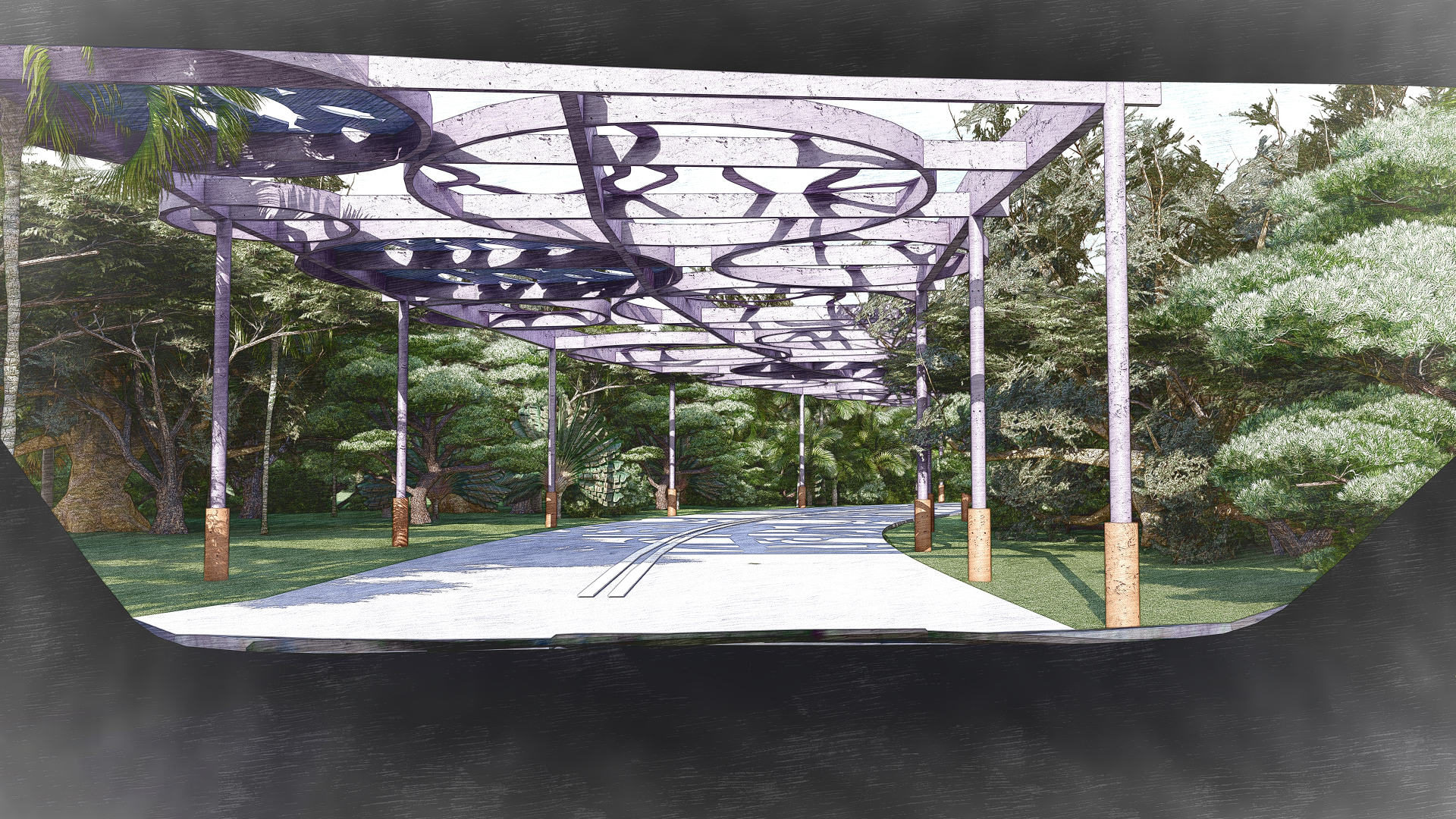
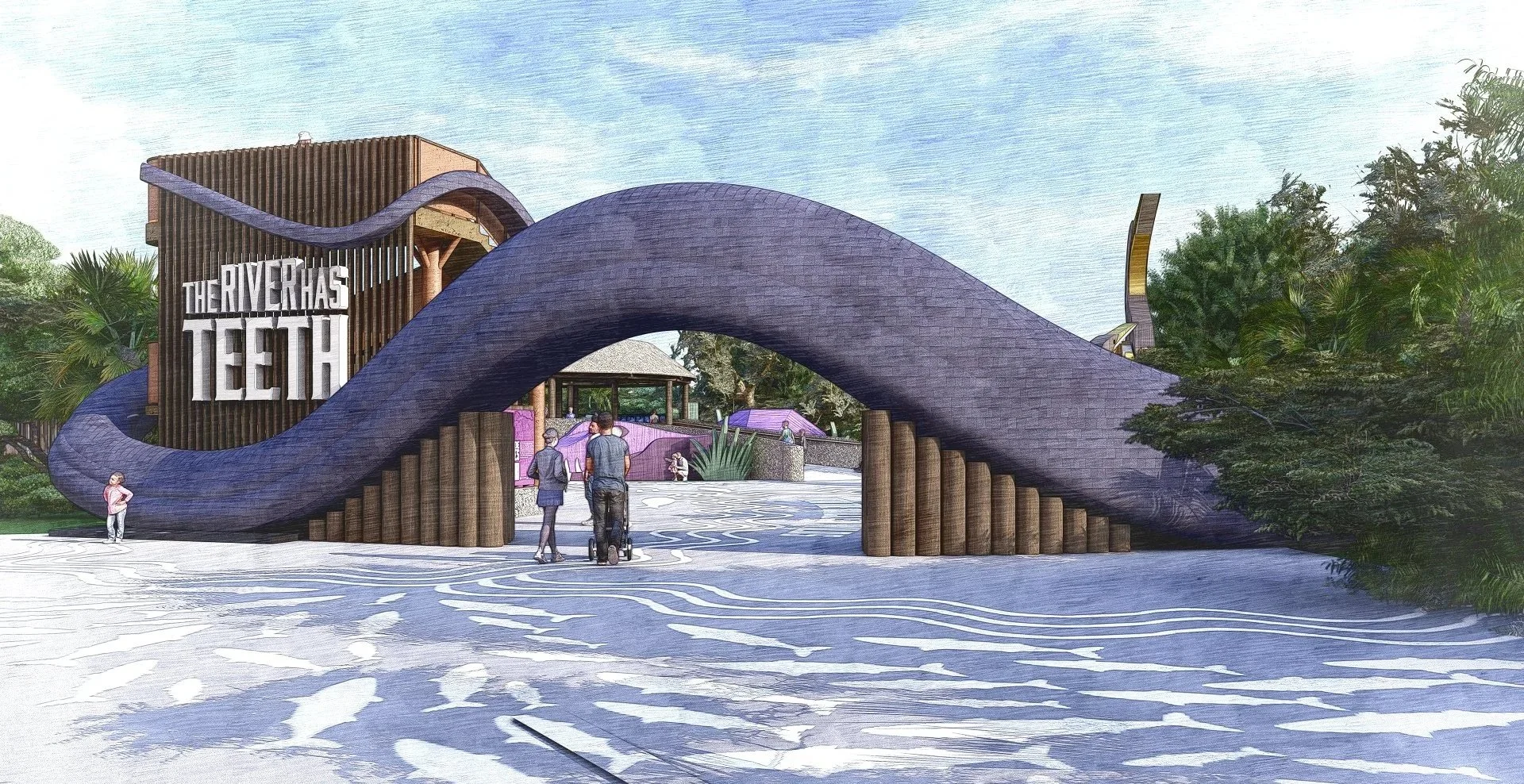


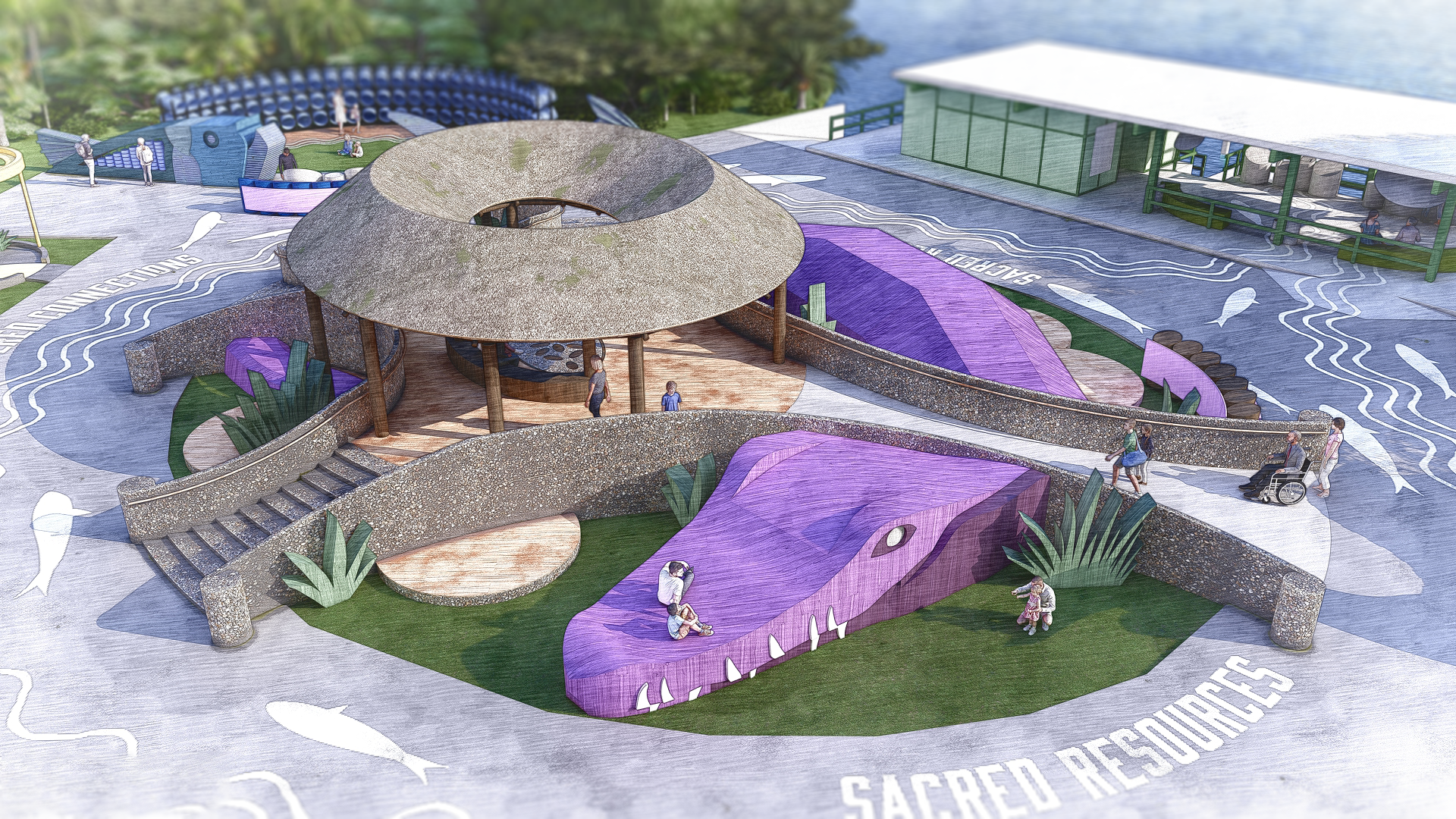

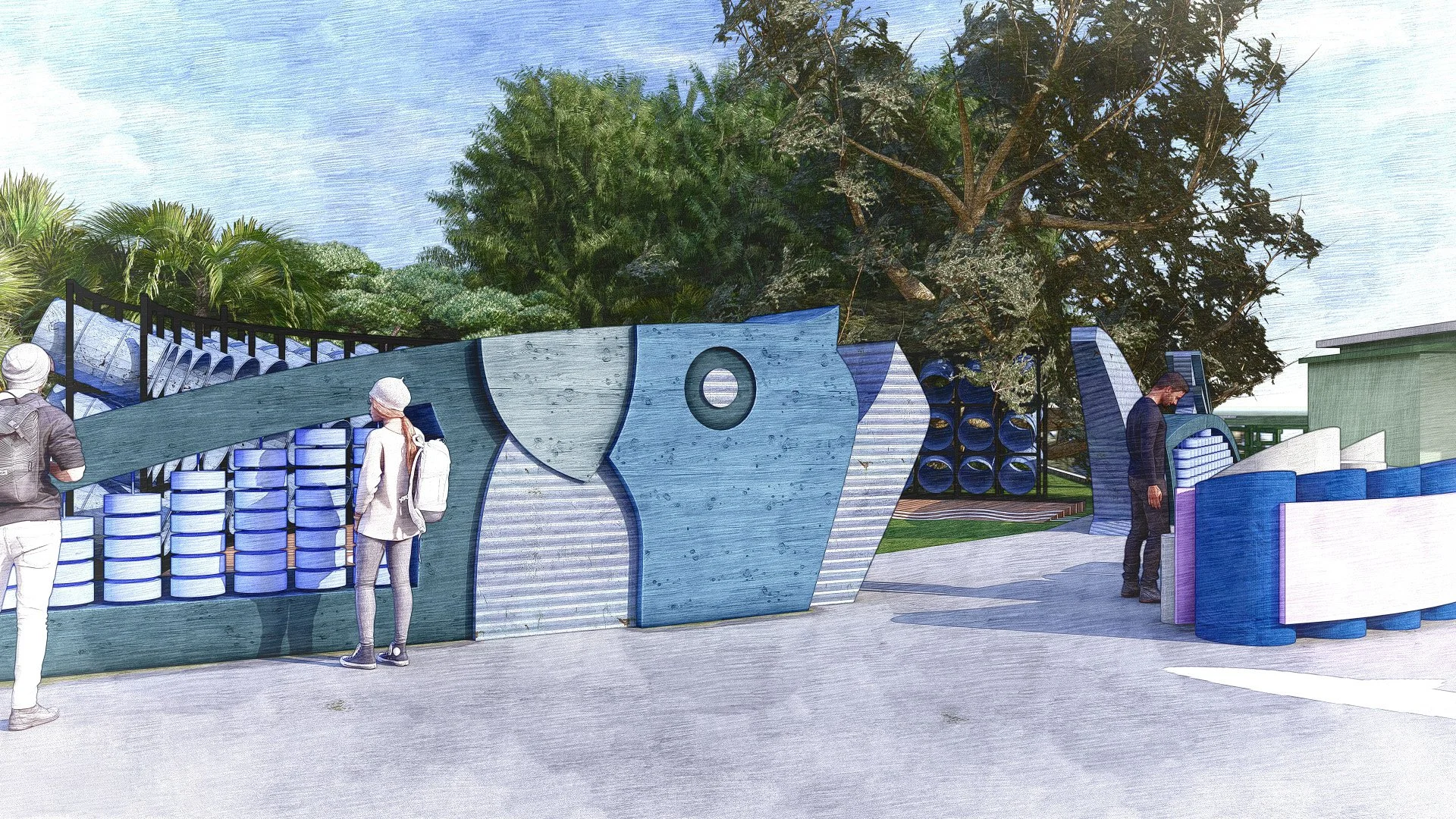




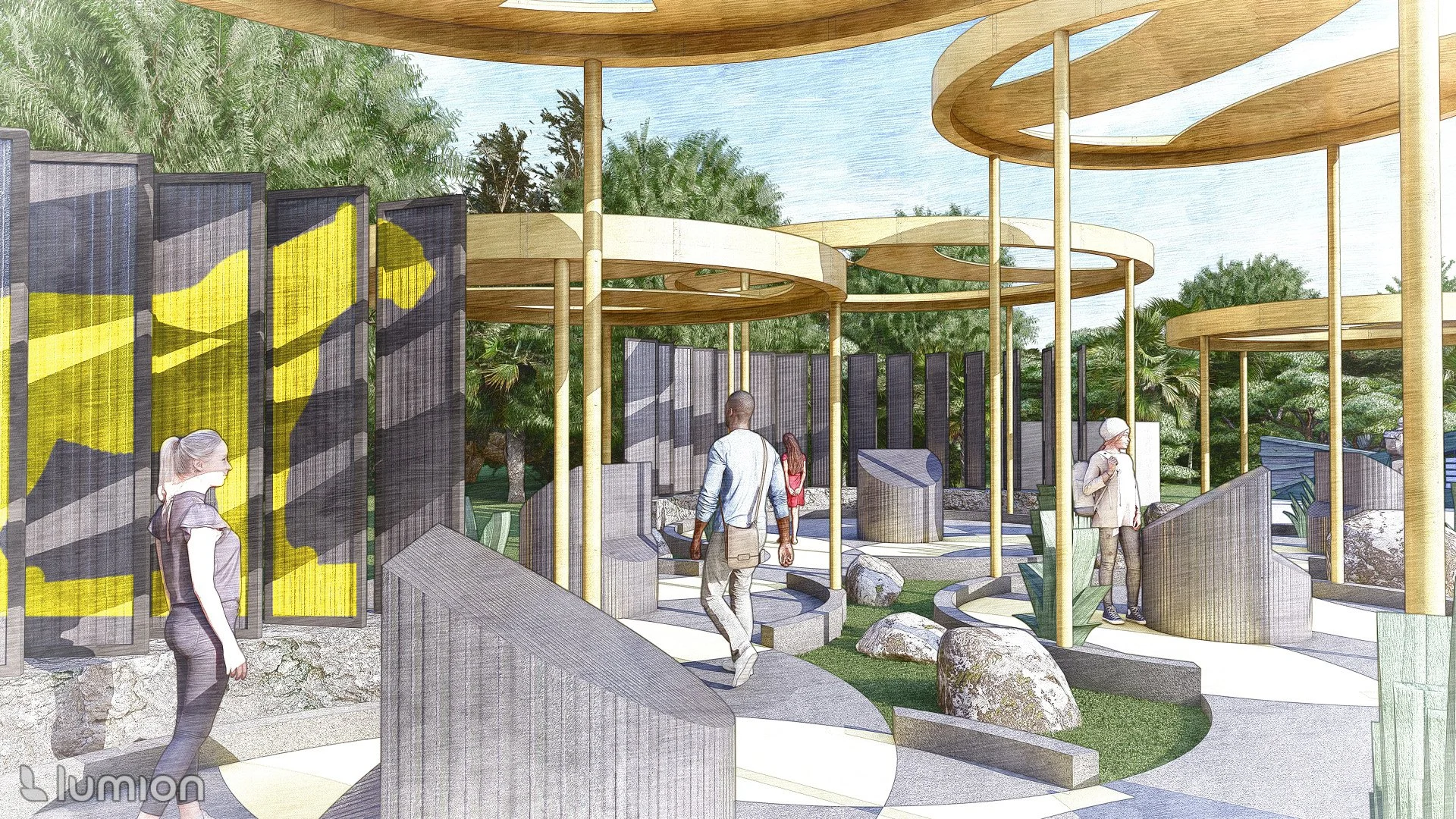
The River has Teeth looks to enhance the park experience by creating experiences that visitors can enjoy recreationally and also learn about critically. The project uses the Everglades as its test site to address issues outlined by the primary client to ensure its relevancy and urgency.
I presented this thesis and project to industry professionals on December 13th, 2024. The project was met with largely positive feedback with additional notes on how to further expand the thesis moving forward. Judges found the exhibition title to be very intriguing and a strong way to entice potential visitors to the exhibition. The use of storytelling and interpretation were highlighted as useful tools in disseminating complicated or daunting information to visitors looking for outdoor recreation play in a multi-generational group setting. Designing activities that were low-impact was a good way to keep the design accessible to different visitors. The design and architecture of the space was appreciated as tools to excite visitors and encourage exploration and wonder in the exhibit. One judge particularly enjoyed the restraint held at the vista overlook, as to not over-design or distract from the beauty of the space.
Suggestions for further development focused on further refining details with the built engagements. Choices for sustainable and temporary materials were a discussion point due to the balance needed to withstand the outdoor terrain while still needing to be temporary in its installation. Some judges suggested proposing it as a permanent exhibition instead to take advantage of the longer lasting materials that could be used.
Overall, the judges enjoyed the project and found it to be a compelling and comprehensive addition to the park experience. Many agreed that this exhibition could be a good way to entice South Florida residents to come to the park while still learning about issues that directly affect them. By introducing the narratives and characters reflective of the region into the park, the exhibition felt holistic to the site and an engaging way for families of all ages to enjoy.
